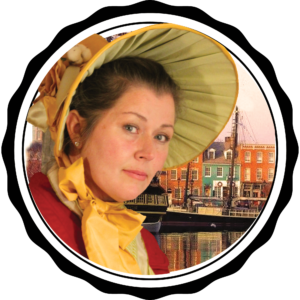
Holley Kirkland, 1808 St. Louis French Socialite
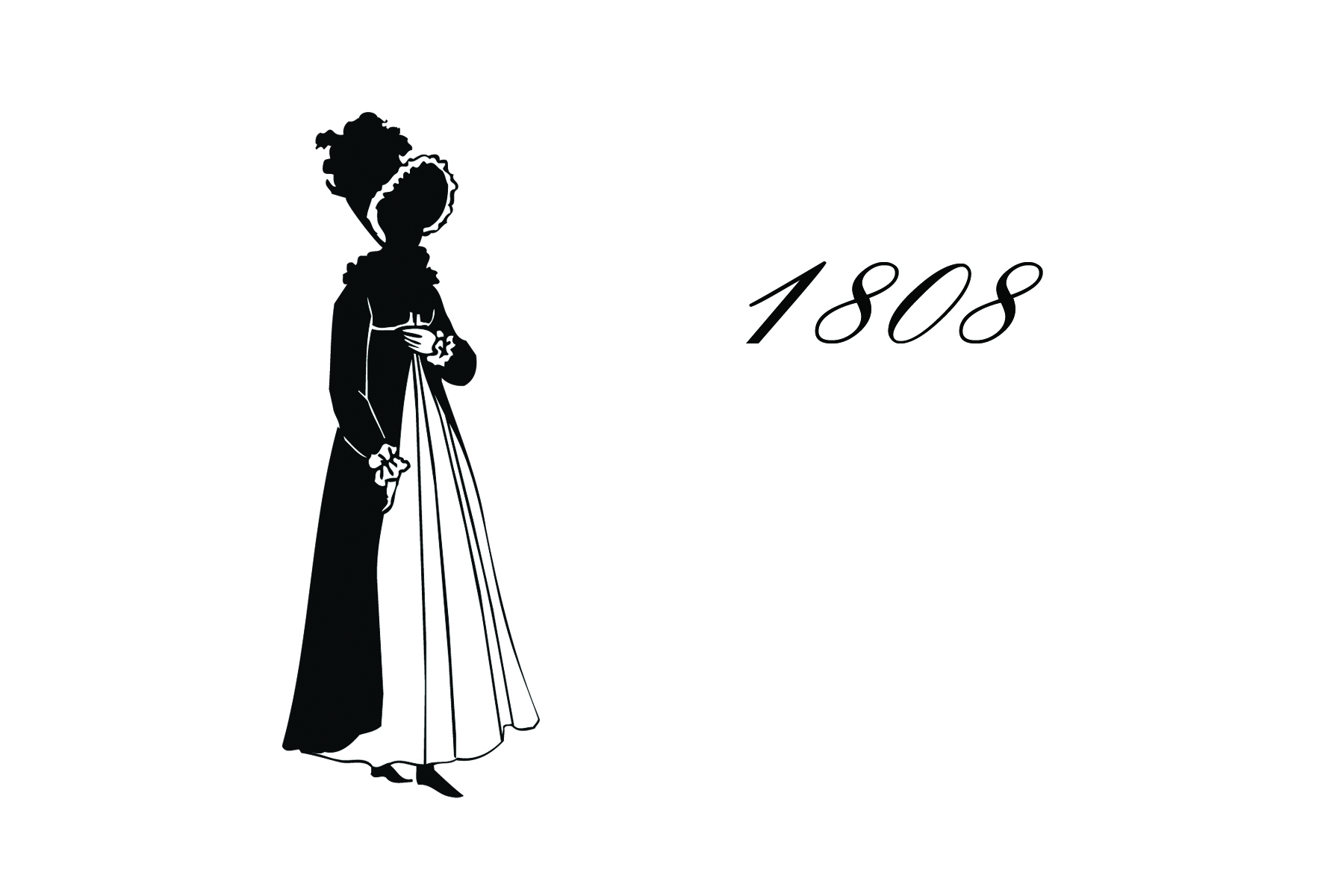
This character is a 4th Generation American “ignoble bastard” French woman who marries an immigrant Frenchman. The depiction shows a place and time in young America where East, West, & Europe converge. Holley is of French ancestry and a neighbor of Daniel Boone who would live in St. Louis near the end of his life to be near his son.
Songs for the era: (“Key to the Cellar”) (“Believe Me if All Those Endearing Charms”) (“Napoleonic Wars” French Anthem) (“Quintet in E Flat”, Beethoven)
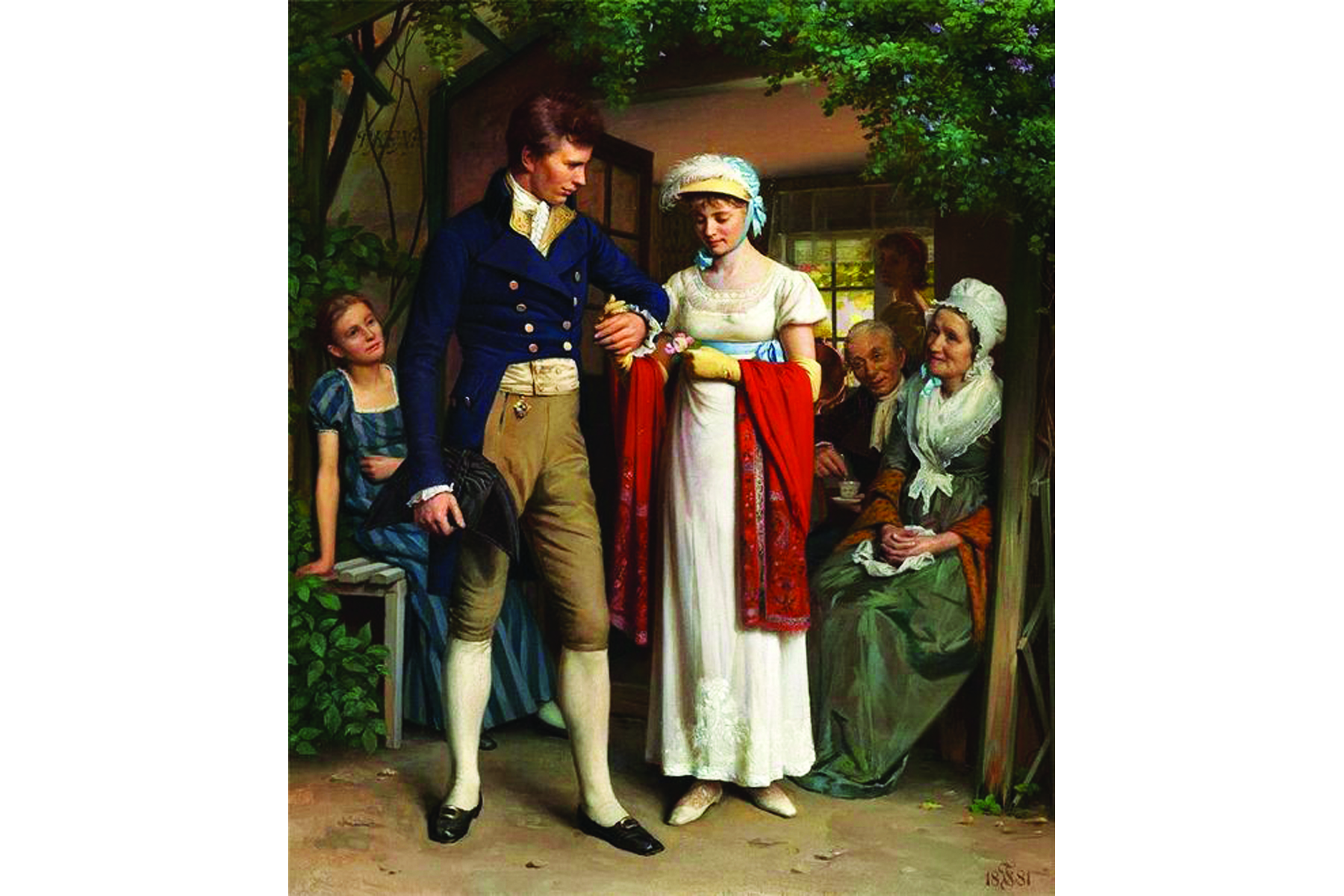
In our story, Holley is invited to the wedding of wedding of William Clark in the city of St. Louis where I met their mapmaker John Colter from the “Discovery Corps”, coming to collect his $500 pay because he had left the group to have adventures in the west before getting it.
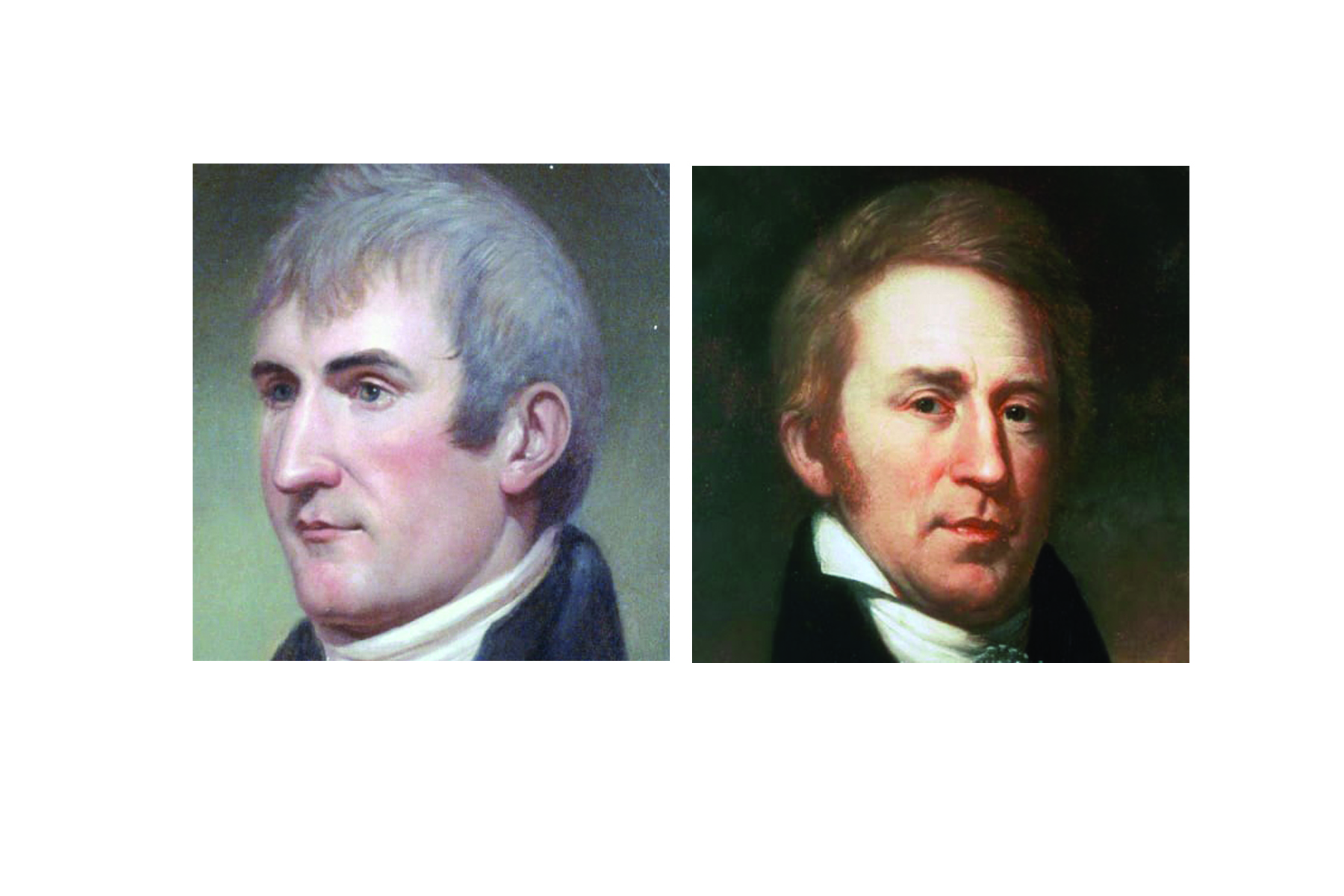
Lewis, the Territorial Governor that year, was at the wedding too, as was Jean Baptiste, the son of Sacajewea.

Lewis, Clark, & Many Others Head to St. Louis
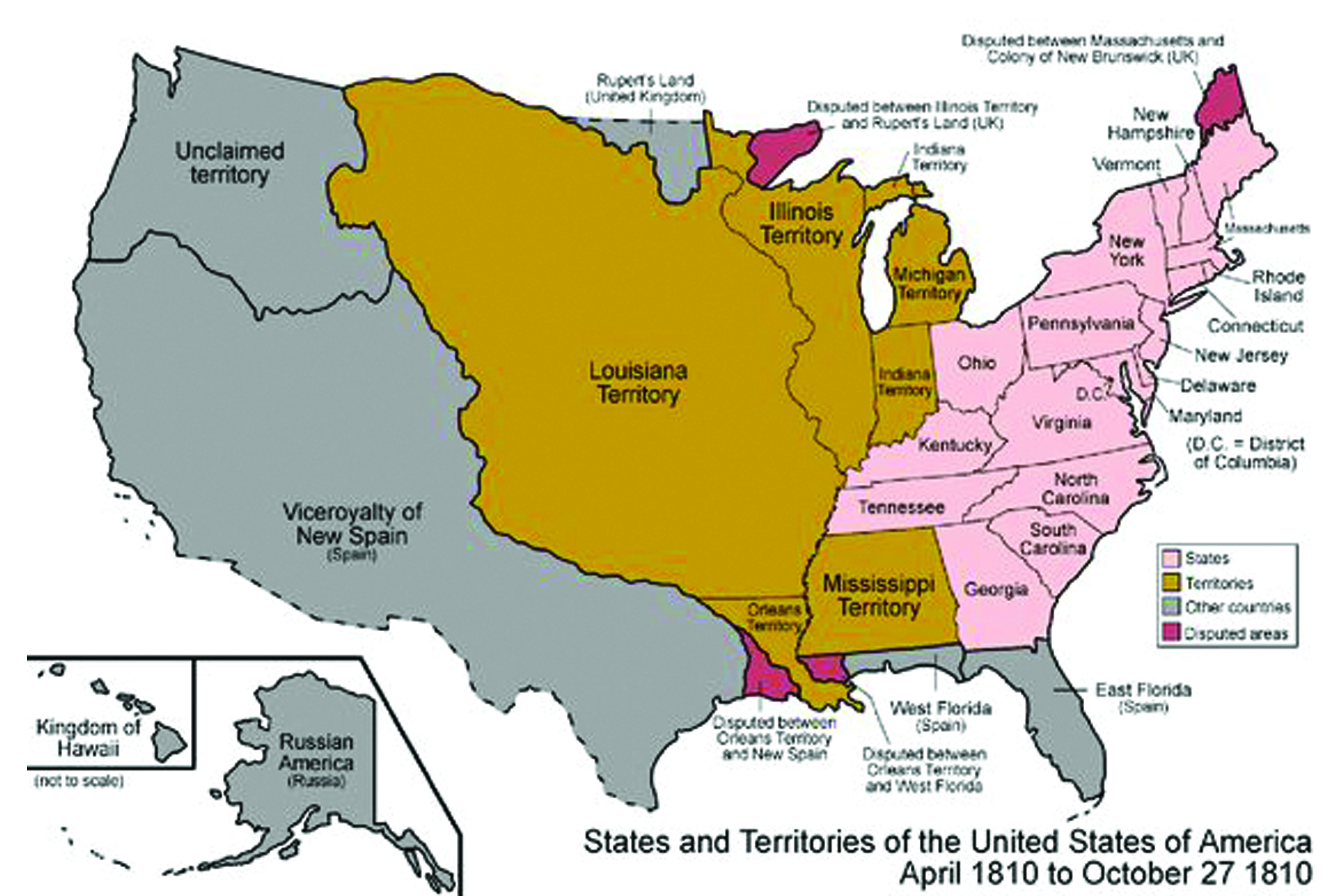
As the 19th century progressed, settlement was made in “jumps” from the now expanding eastern colonies towards the Midwest. In particular, southwest Missouri became a key stop before making a big leap westward. Many were anxious to leave the confines of growing populations, and others were pursuing investments in land and resources.
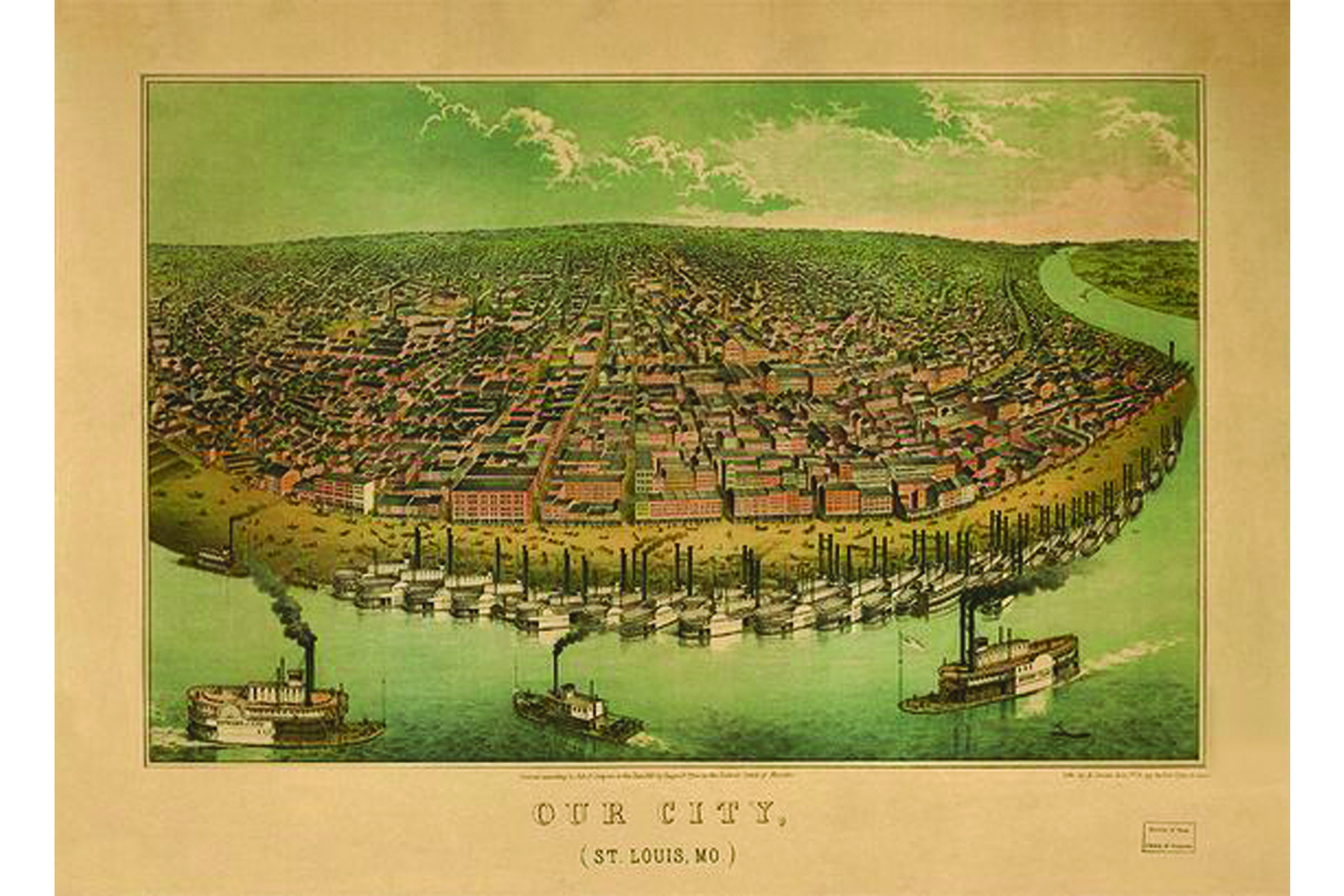
St. Louis, previously only a rough French settlement for trappers and traders, took on a new role as a staging point for areas west. Previously within the Louisiana Territory, it had generations of French who were joined by aristocratic English and Germans at this time.
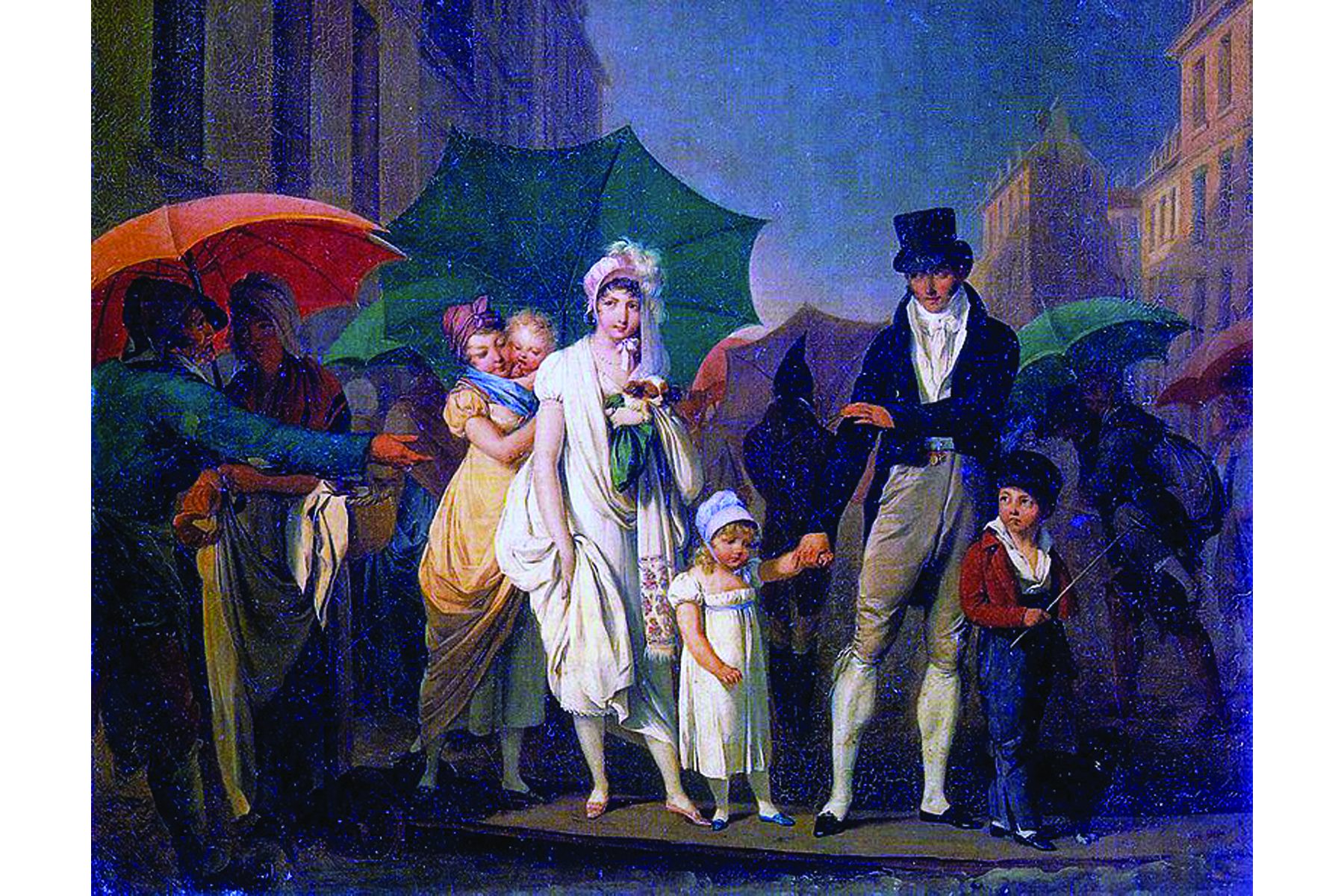
Royal immigrants who, due to their birth order, could not inherit back home, but in Missouri, they enjoyed high class standing. American women of wealth, and especially those with French heritage like Holley, married these nobles and stayed in Missouri.
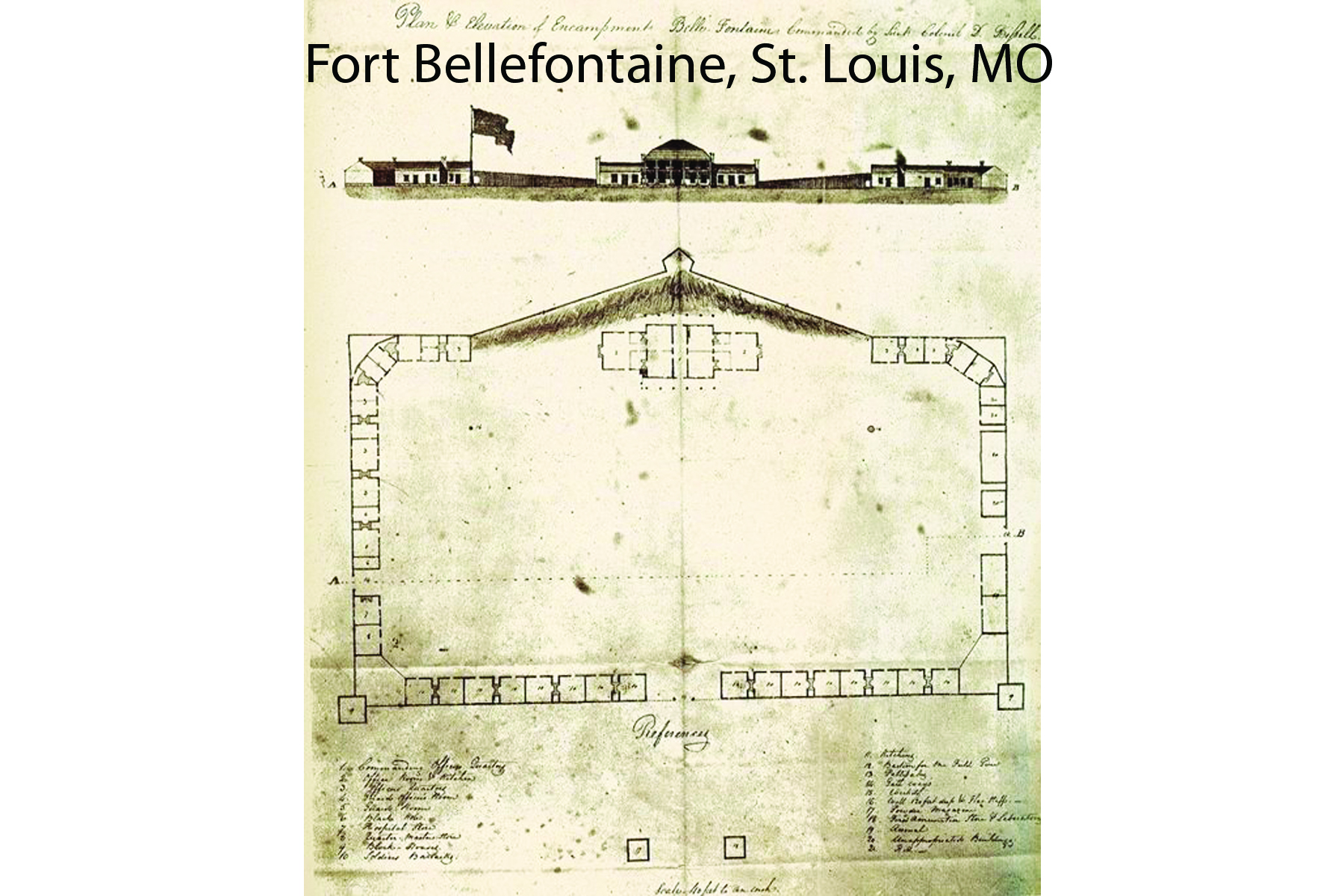
Pioneers who had already moved to Kentucky, Tennessee, and Virginia, were on the move again to exploit resources of fur, timber, and ore in the Missouri region. Others who had already gone further West, came back east again and stayed in the region to trap, mine, and cut, or perhaps because their wives made them return to society.
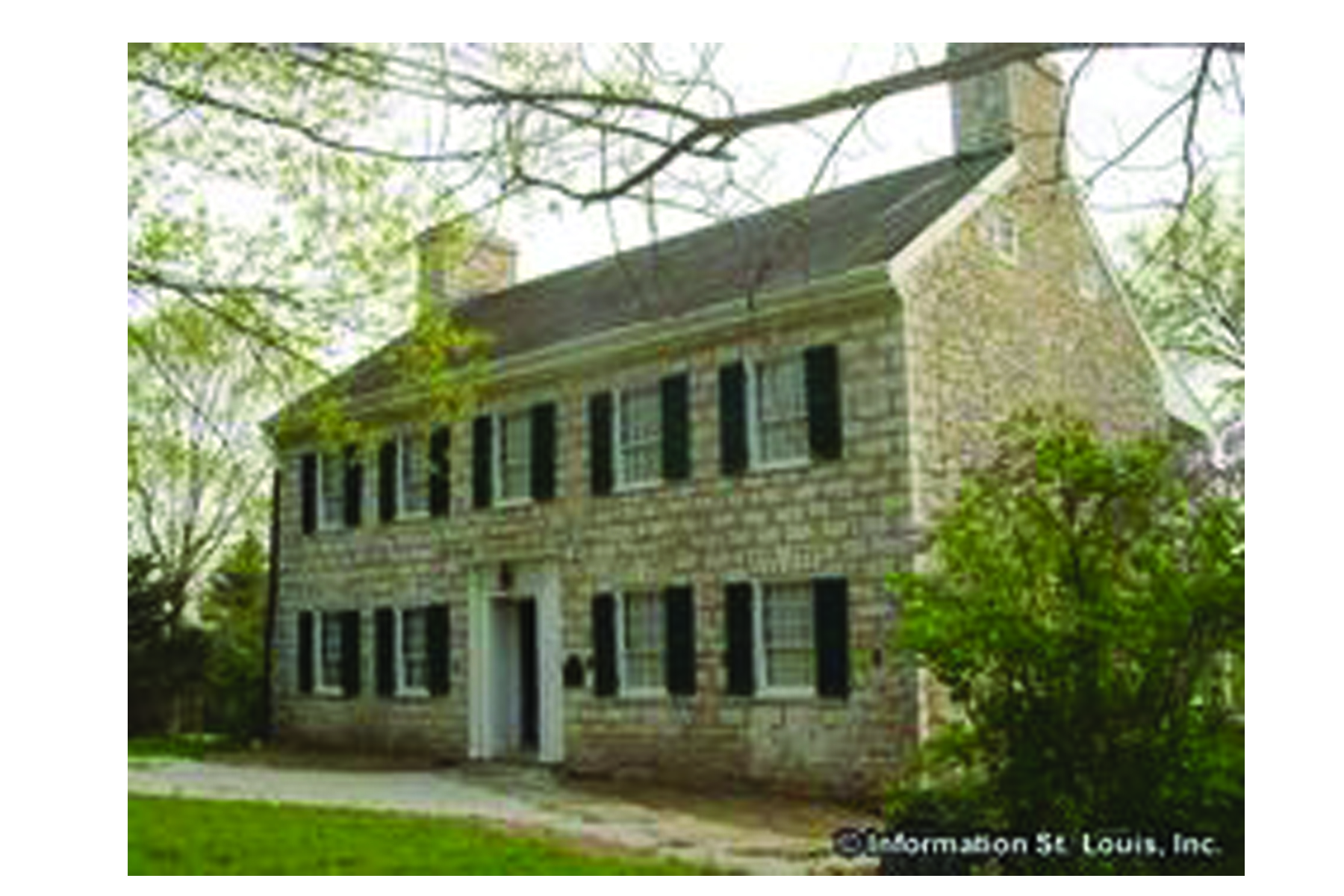
Daniel Boone completed building his last house outside St. Louis in 1809.
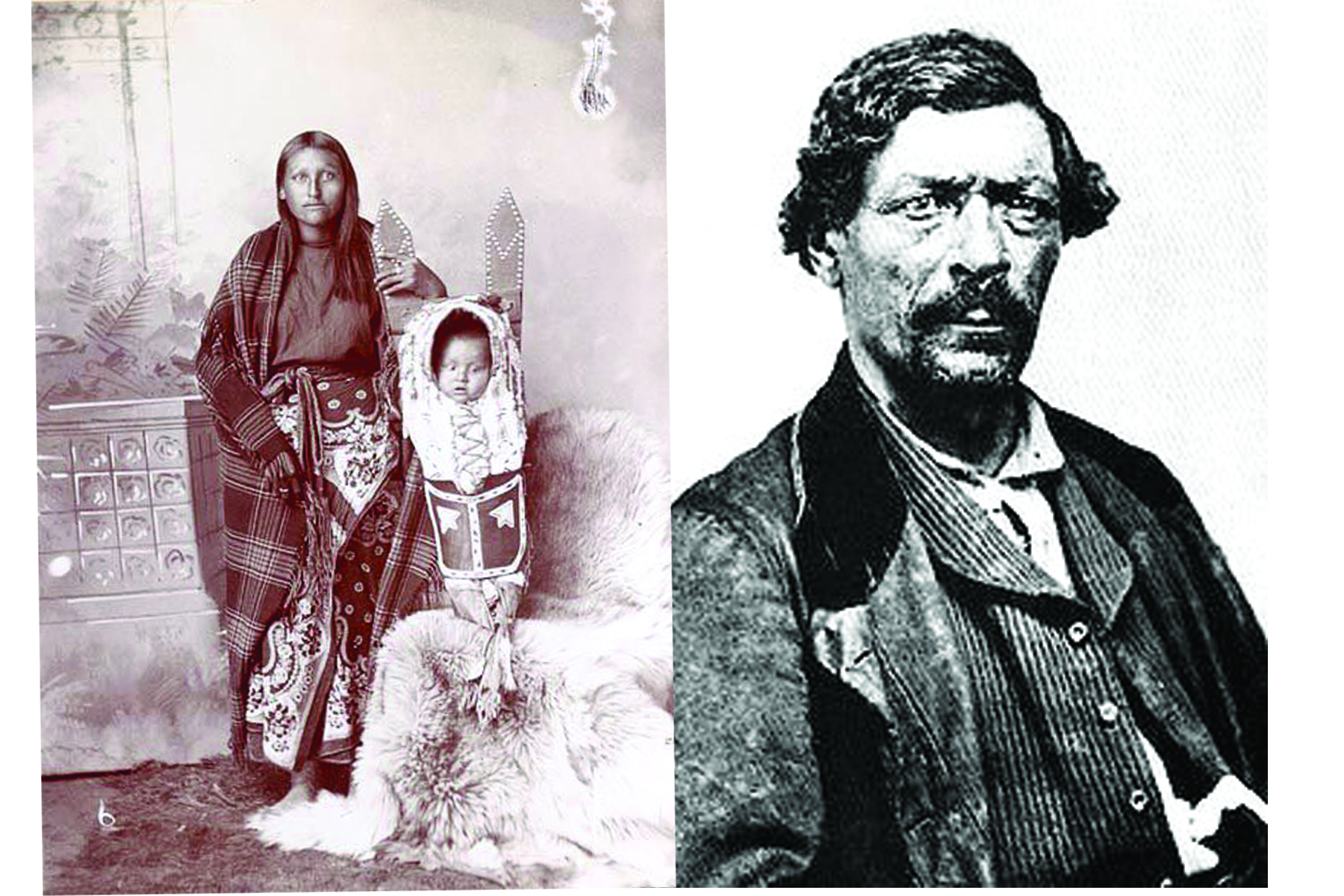
With notables Lewis, Clark, Sacajewea’s son Jean Baptiste, and Coulter in town at the time, it is logical a socialite like Holley would know them.
Fashion of the Day
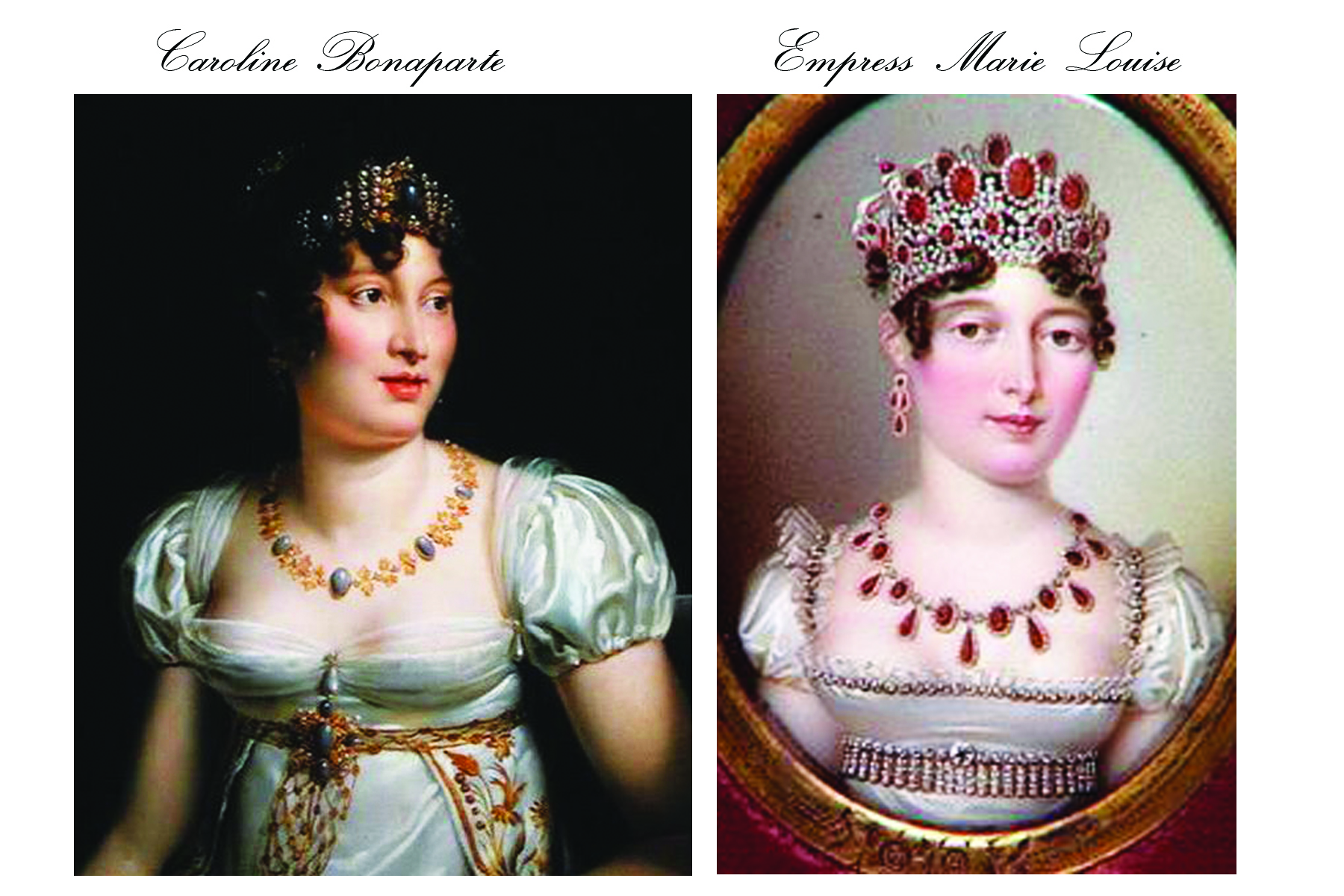
It was still the Regency Era with the French in charge of fashion worldwide which would last until Queen Victoria took over the English throne in 1837. Napoleon had divorced Josephine, and his new wife Marie Louise was not much interested in clothing, so she let him dress her up with the help of his little sister
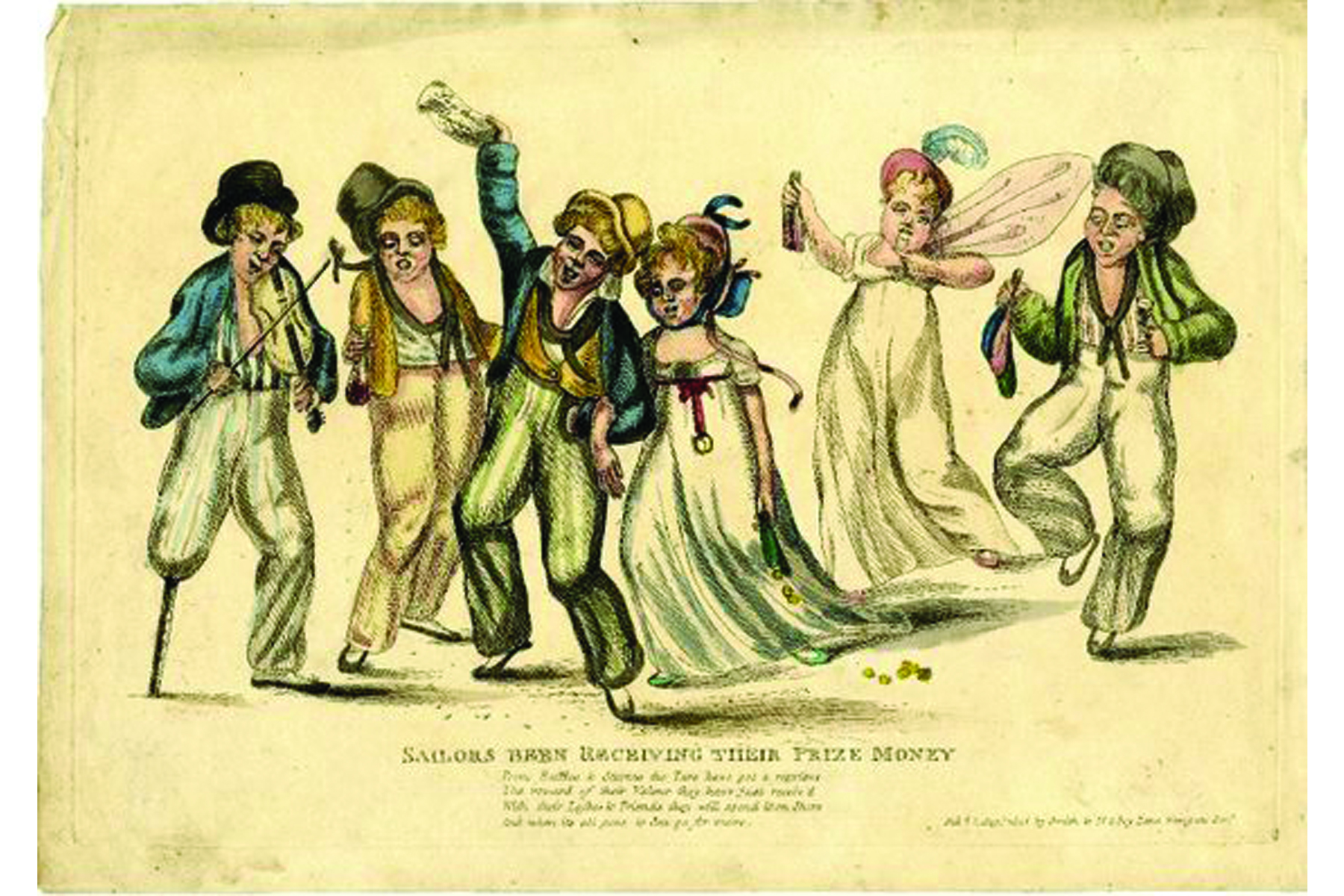
Caroline who preferred excesses of court and detested the flimsy “little white dresses” of the 1st Regency and their non conforming corsets that used so little French fabric because they only pleased drunken sailors.
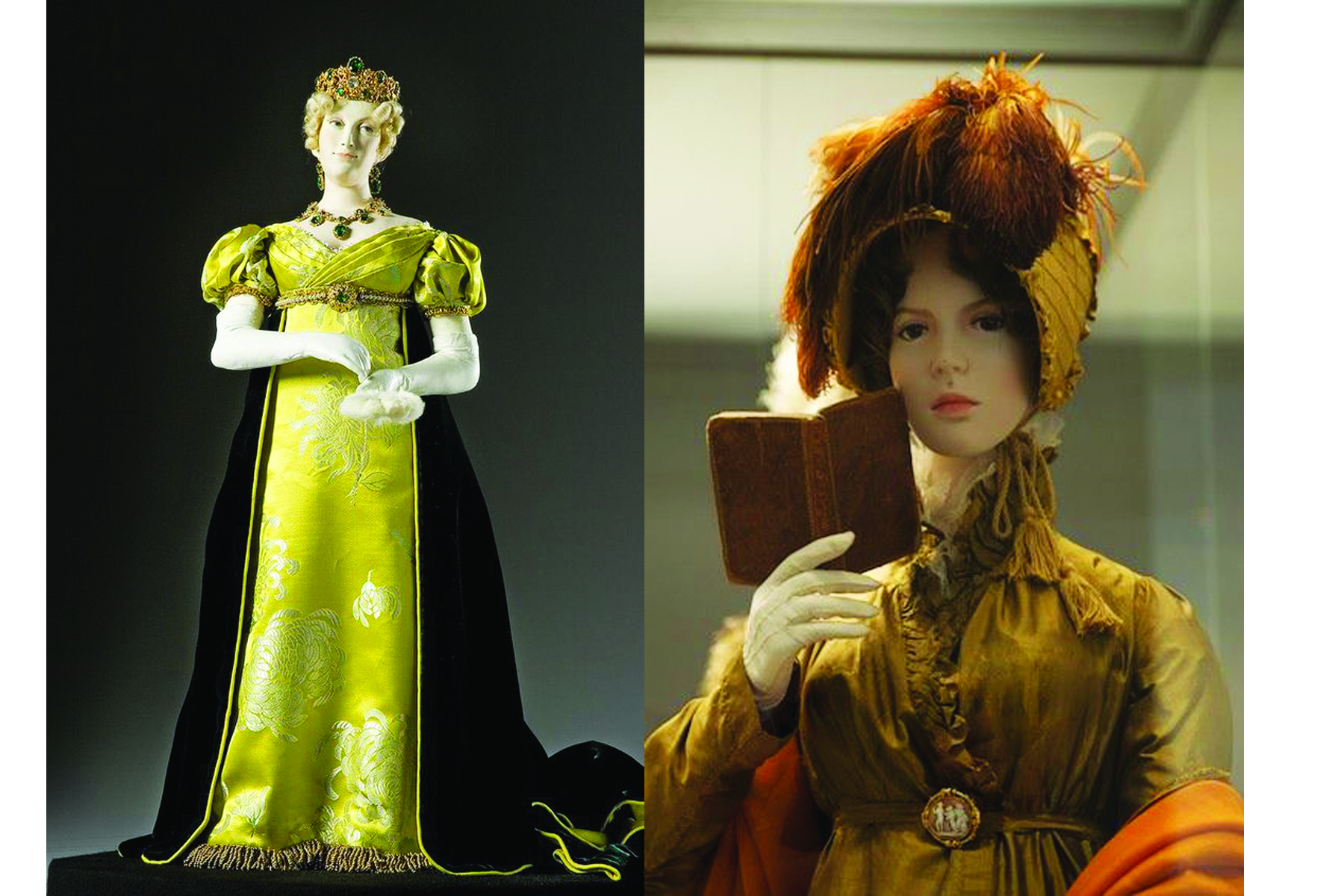
To get women to wear more, Napoleon turned off the heat in the palace and passed a law that no woman could wear the same dress twice. He sent out fashion dolls to direct tailors to use thicker and more luxurious fabrics and to add puffs, sleeves, and ornaments.
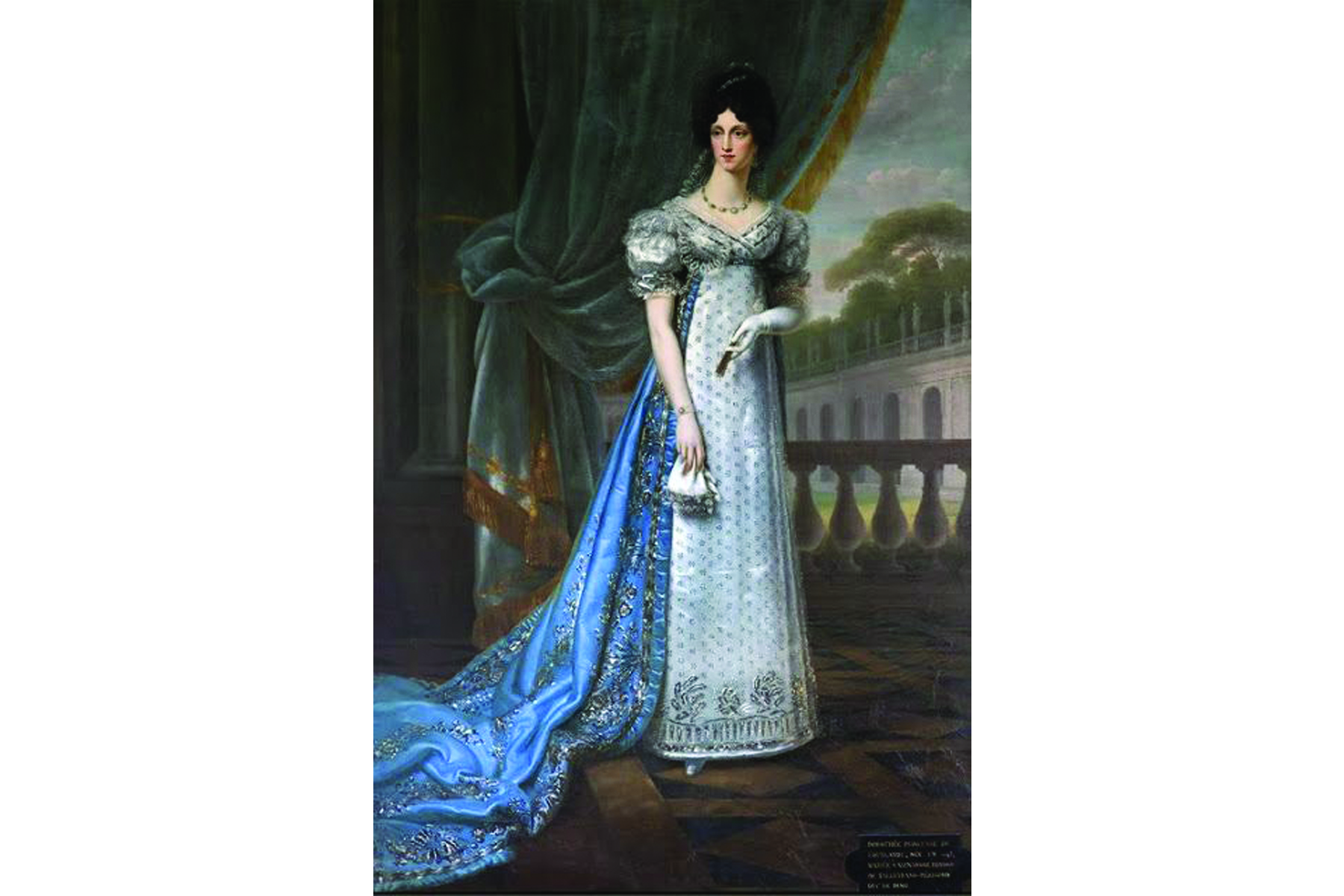
Nostalgia for the “good old Middle Ages” was response to feeling like Europeans were always at war, along with confusion in class structure as countries reorganized, plus a fear industrial development was taking them away from where they felt they should be.
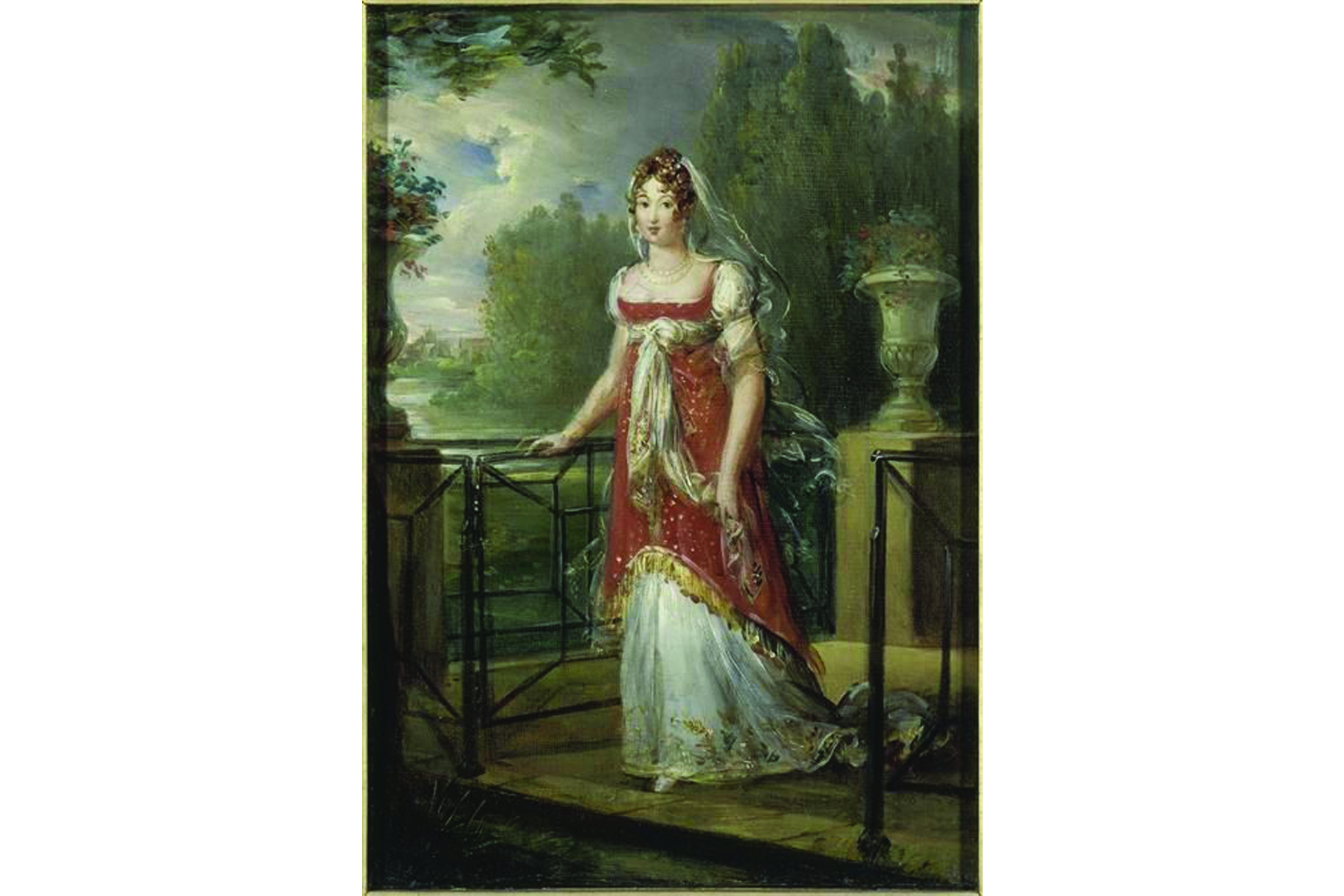
As a result of Napoleon’s dictates and the emotional climate, the flowing classical robes of 1st Regency straightened and became more stiff and angular in 2nd Regency. Greek, Roman, and Egyptian influence was out. Spanish Rococco, Asian, and India influences with heavy fabrics and copious trimmings, pleats, tucks, and sashes were in.
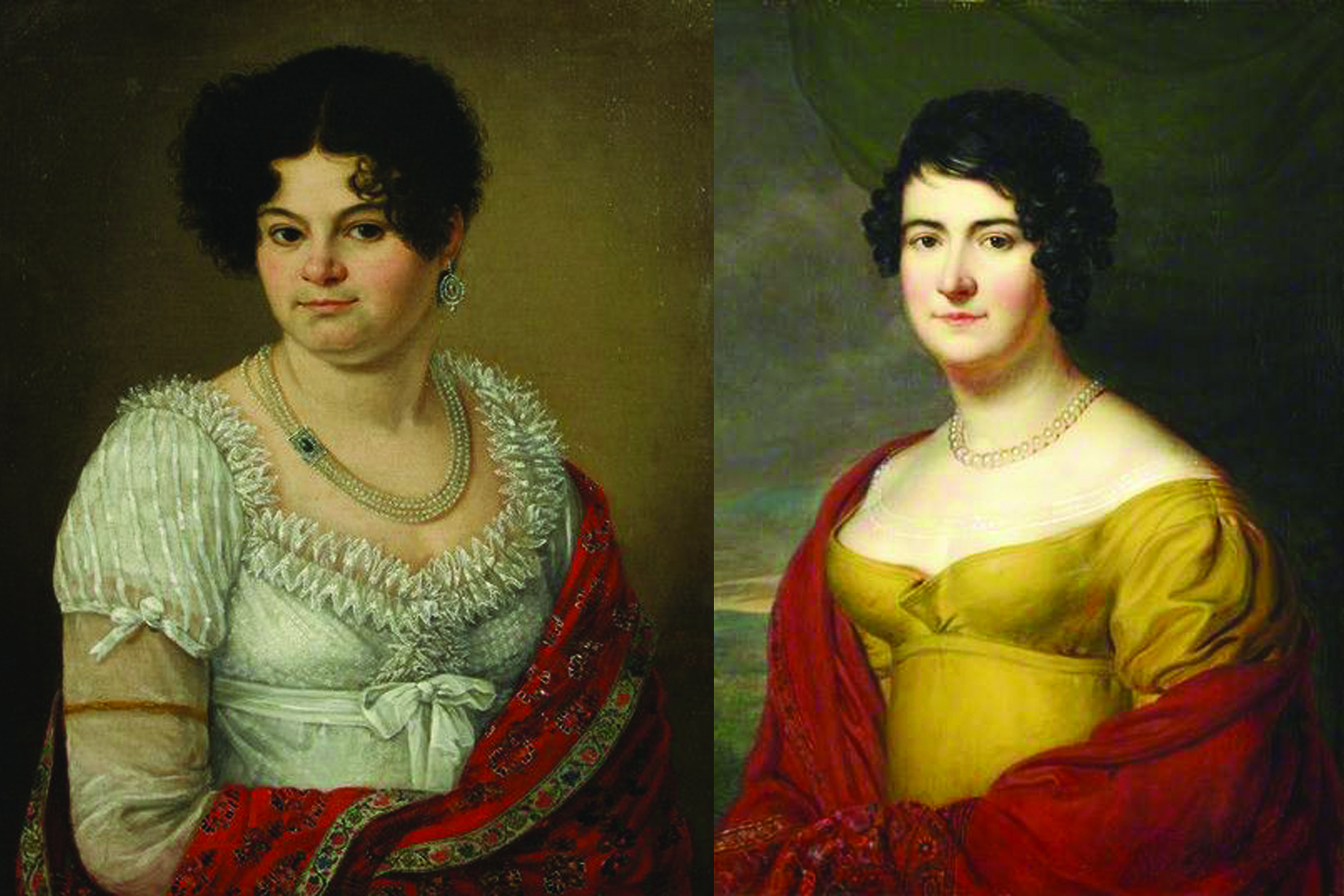
The discovery of Pompeii, and trade with China influenced ornamentation, and trade with India brought beautiful shawls like Holley’s which would become wildly popular for almost a century.
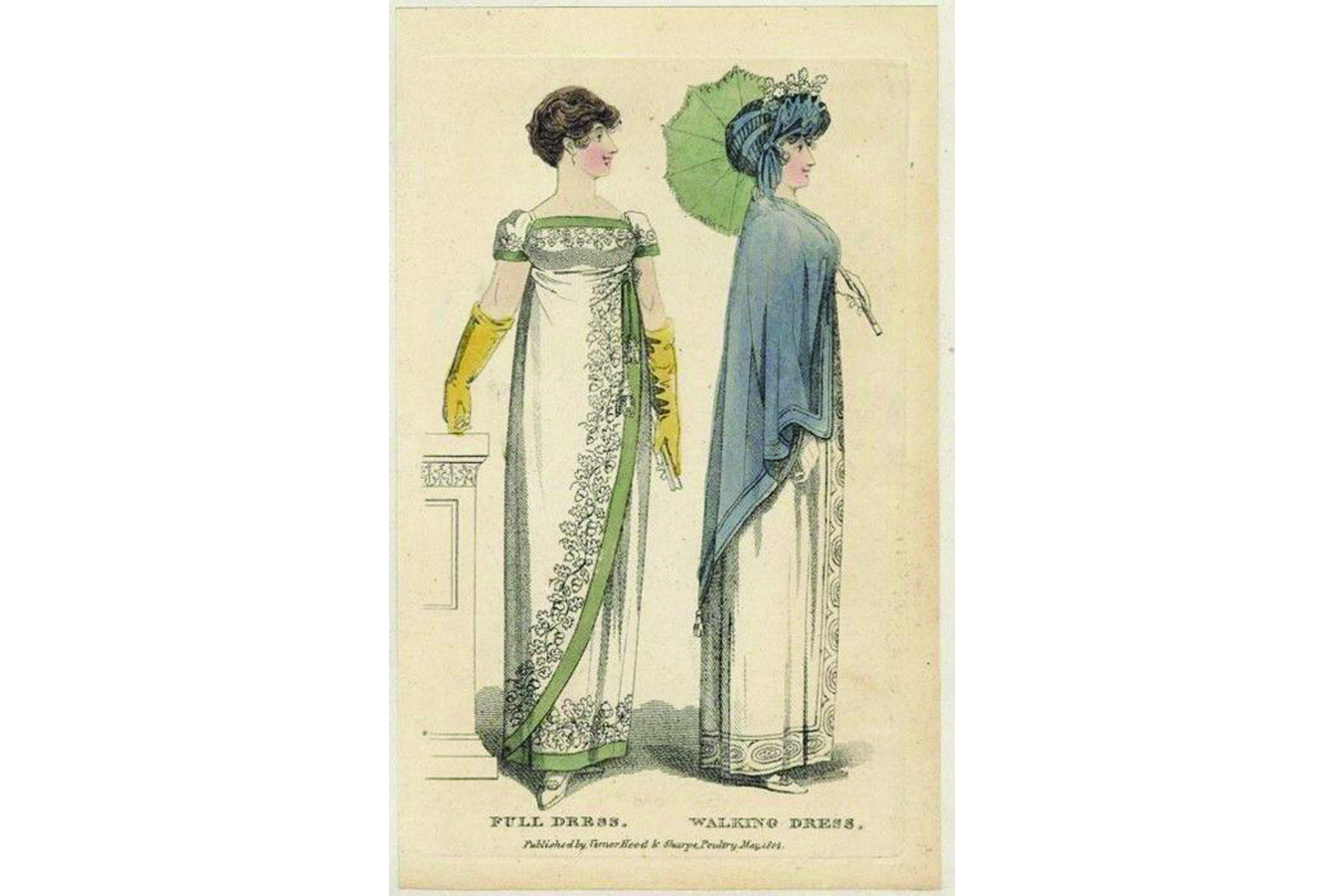
With trains now also out, the overall silhouette was still based on the same simple dress with empire waistline, low decolletage with emphasis on round breasts, minimal corset, and flowing skirt, but was straighter and fuller.
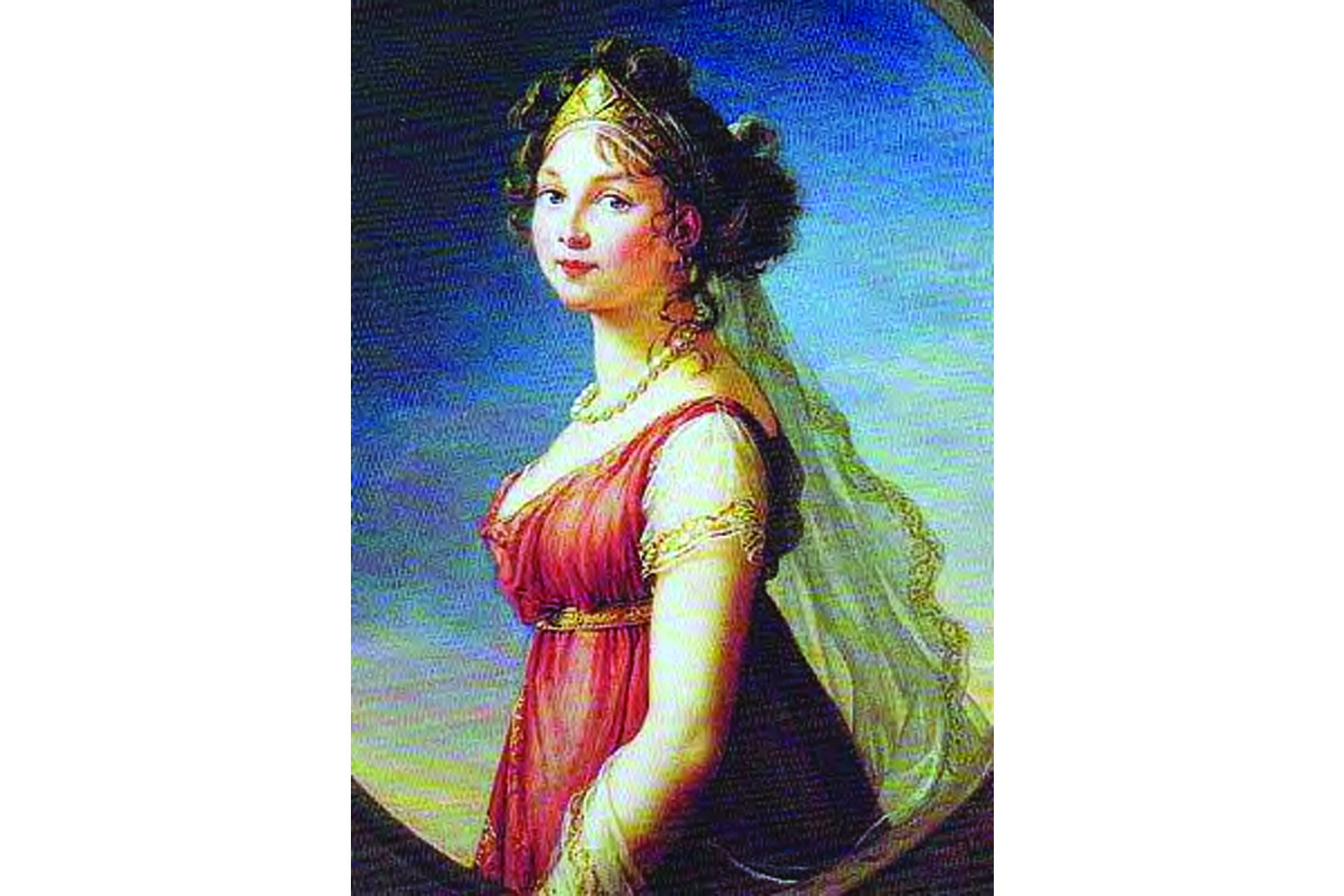
Court and evening dress saw beautiful deep and richly colored silks or pastels, while the plain, washable white cotton was the mainstay for daily wear.
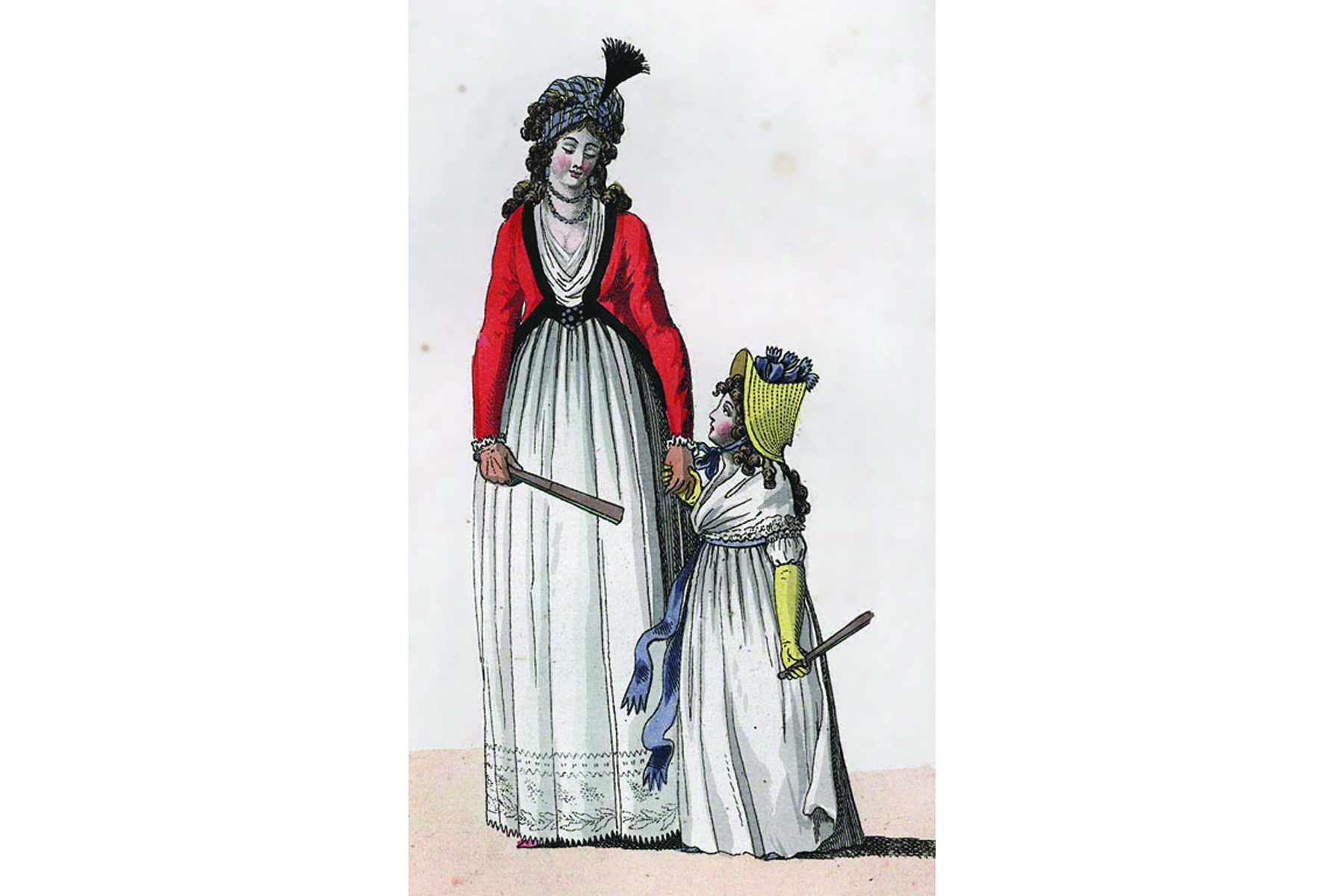
Every day women still quietly wore the simple white dresses of the prior decade in defiance of dictates to dress in excess. Ironically this era would be looked at as a time of freedom when compared with the Victorian .

War made popular frogging, epaulets, and colors to honor the fallen. The under the bust Spencer jacket was said to have been invented by an officer who singed his coattails in the campfire.
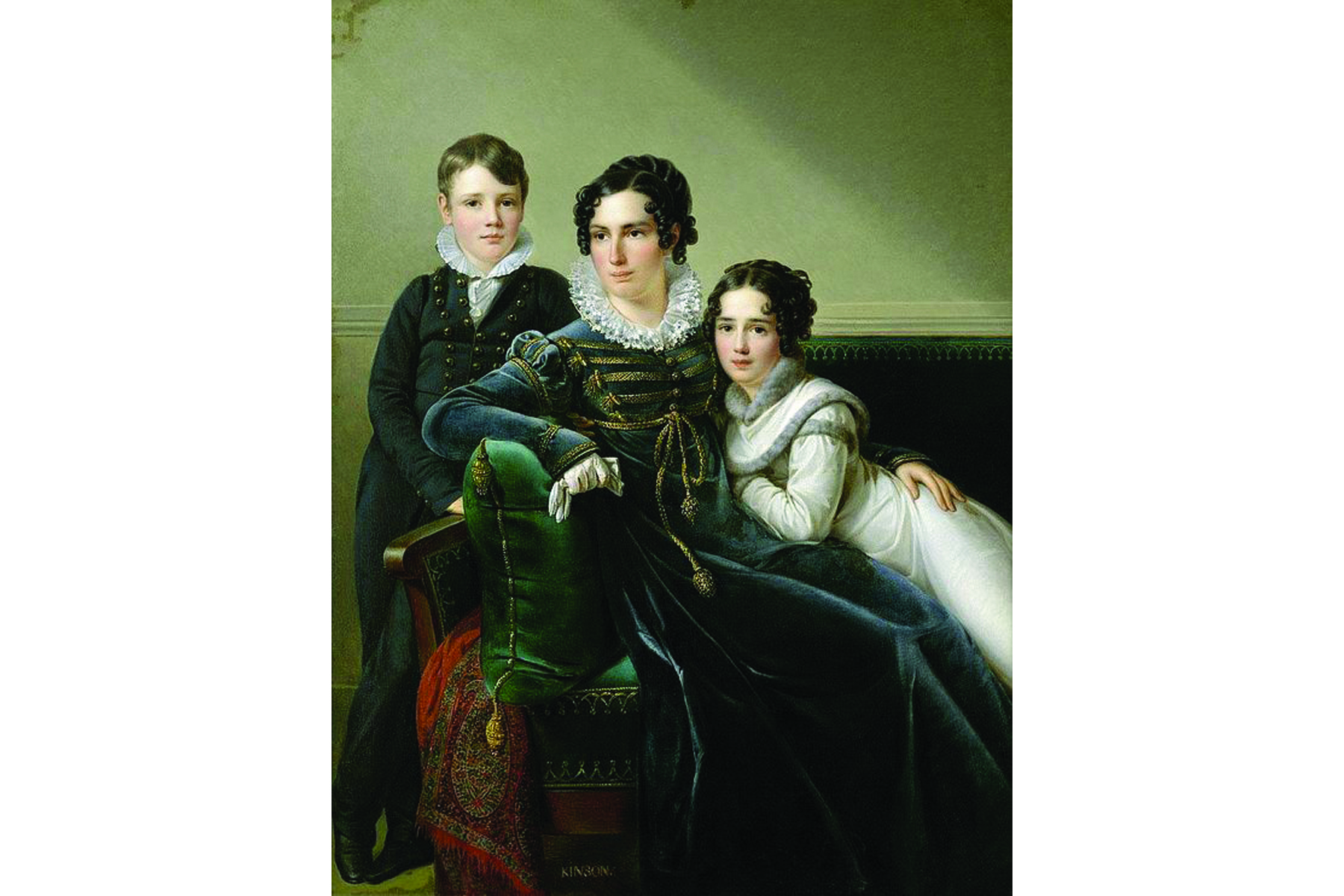
The entire family dressed in military fashion.

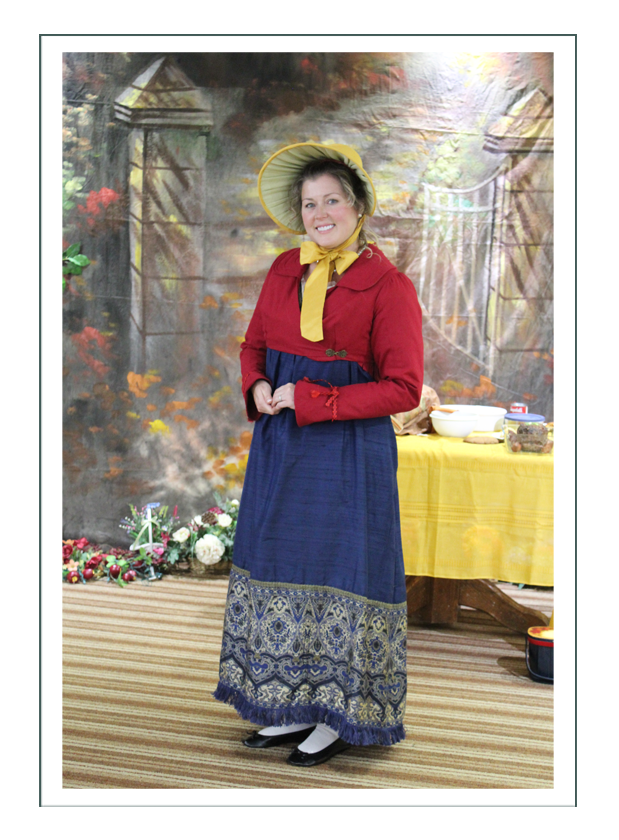
Holley wears a linen and cotton blend red Spencer jacket featuring a tapered ruffle high in the back, with hand corded inserts on the collar which are a nod to military influence.
It has silk brocade lining, a status symbol. The sleeves are intentionally made too long and built so they stick straight out and make a “pouf” in back notable of the era. The red represents patriotism; a favorite fashion color in 1808.
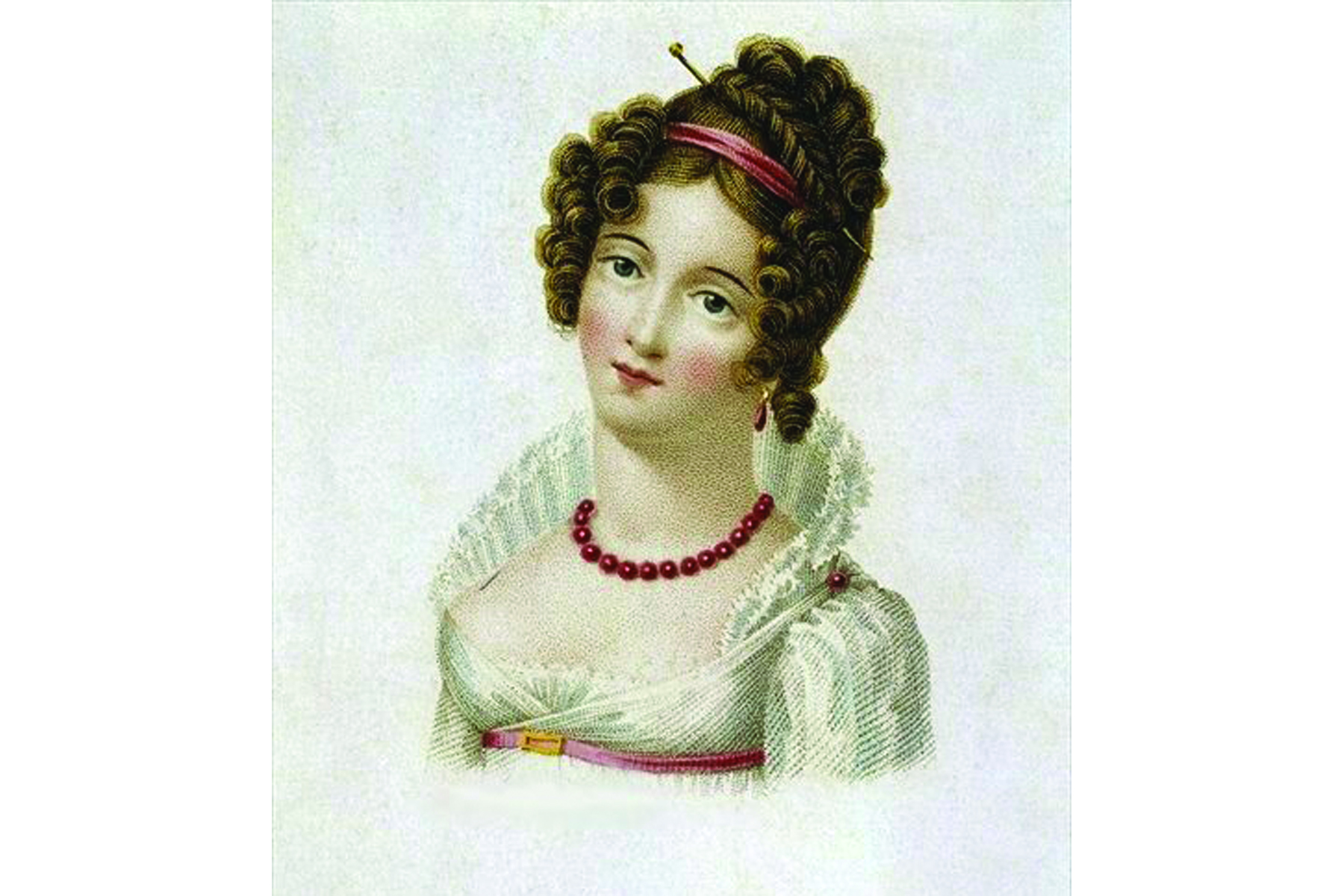
Hair for women of all ages was worn short or piled on the head like Holley’s with ringlets coming down the front and back. Simple bands or ribbons held it in place under the bonnet.
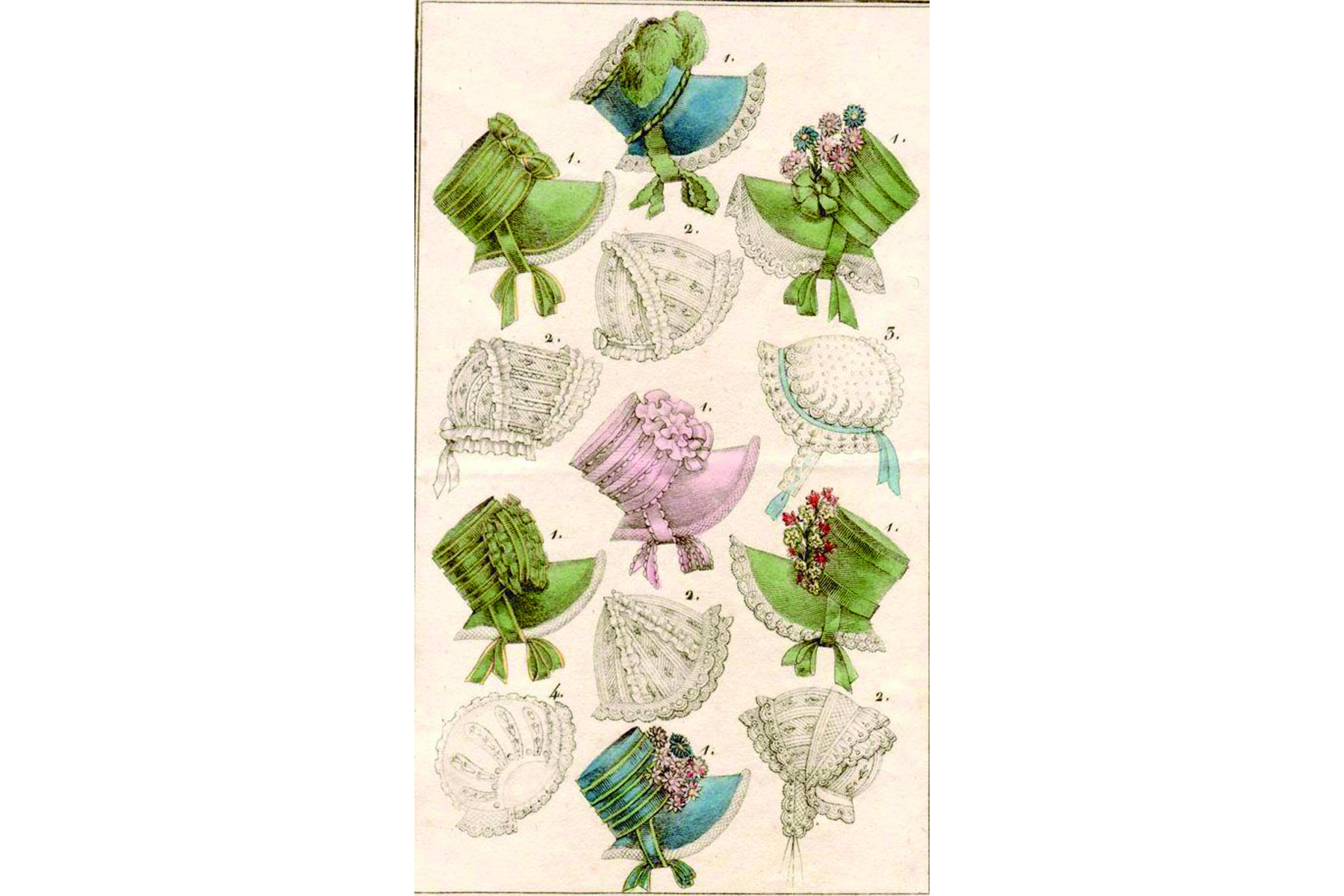
Holley’s bonnet is covered by pure silk and is fully lined in linen. It has a high crown with silk flowers and ribbons, a peacock feather, and a cotton ball. This shape was the basis for bonnets for the next 80 years, which would go high or wide depending on hair style.
Leather no heeled dancing pumps like our Holley’s with over-the-knee stockings were worn by all classes and for all functions.
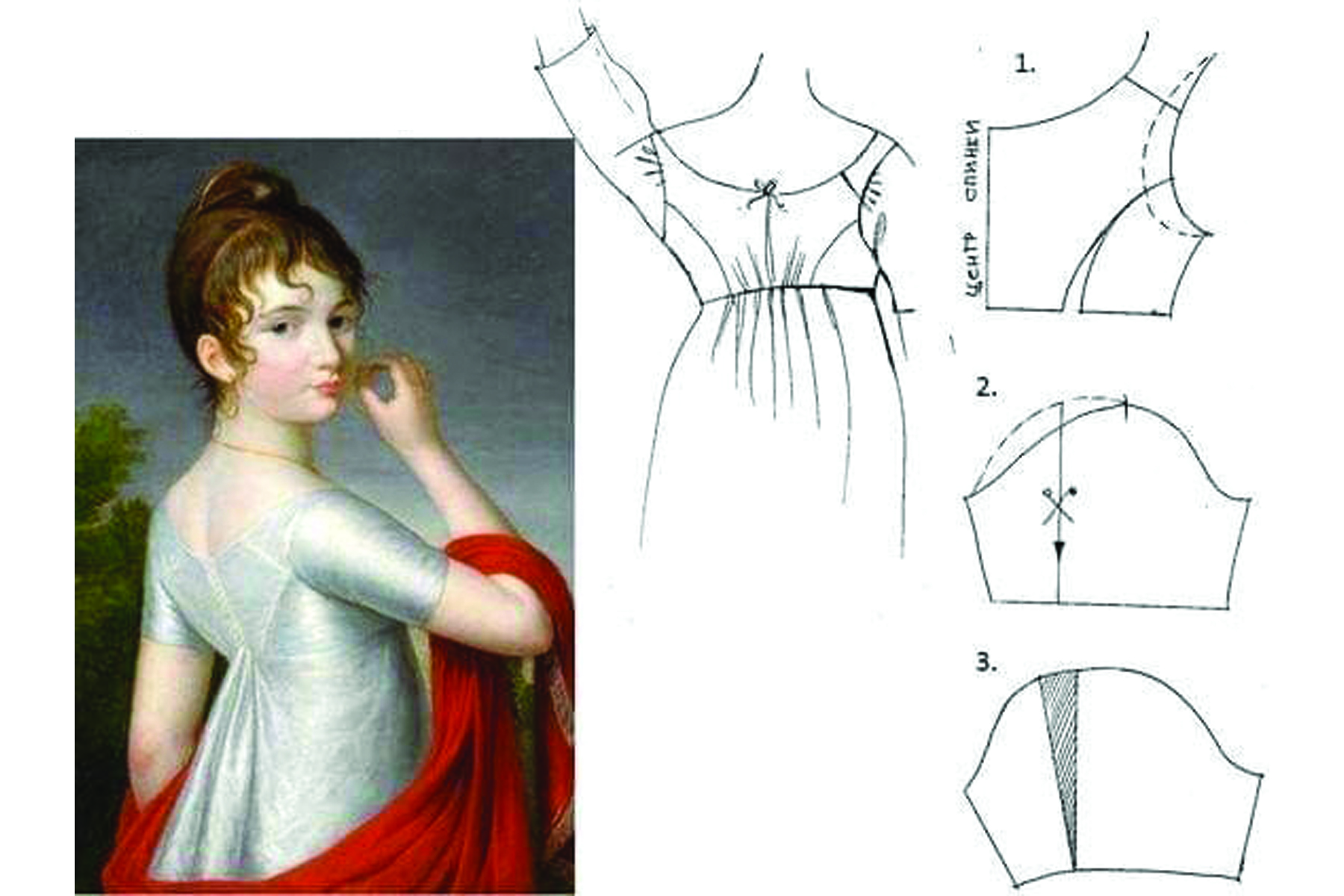
Holley’s evening robe (gown) is of navy blue dupioni silk and has the Regency typical empire waist. It has a bib style bodice which laces in the back, meaning she needs her maidservant to help her dress. The elaborate gold trim indicates status and wealth and is an American version of French Court dress.
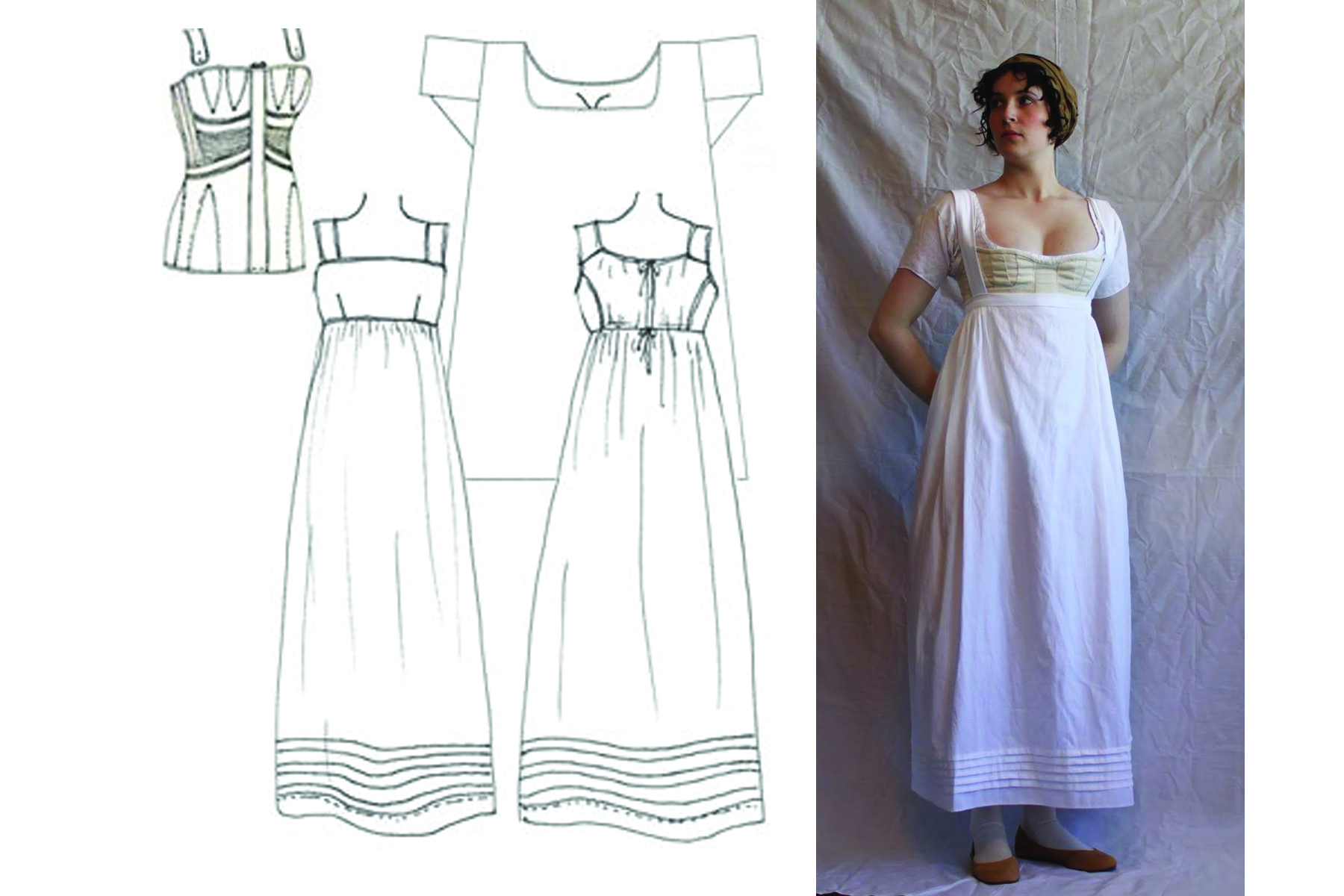
An upper petticoat was an outer garment at the time, which was worn on its own or under a sheer gown as a liner. Holley’s upper petticoat has 500 tiny pleats, each “stroked” by hand and hand stitched, and then strategically tied under the bust. It has large tucks at the hem to adjust for different skirt lengths since those were often changing, and also gave weight to keep the draping vertical.
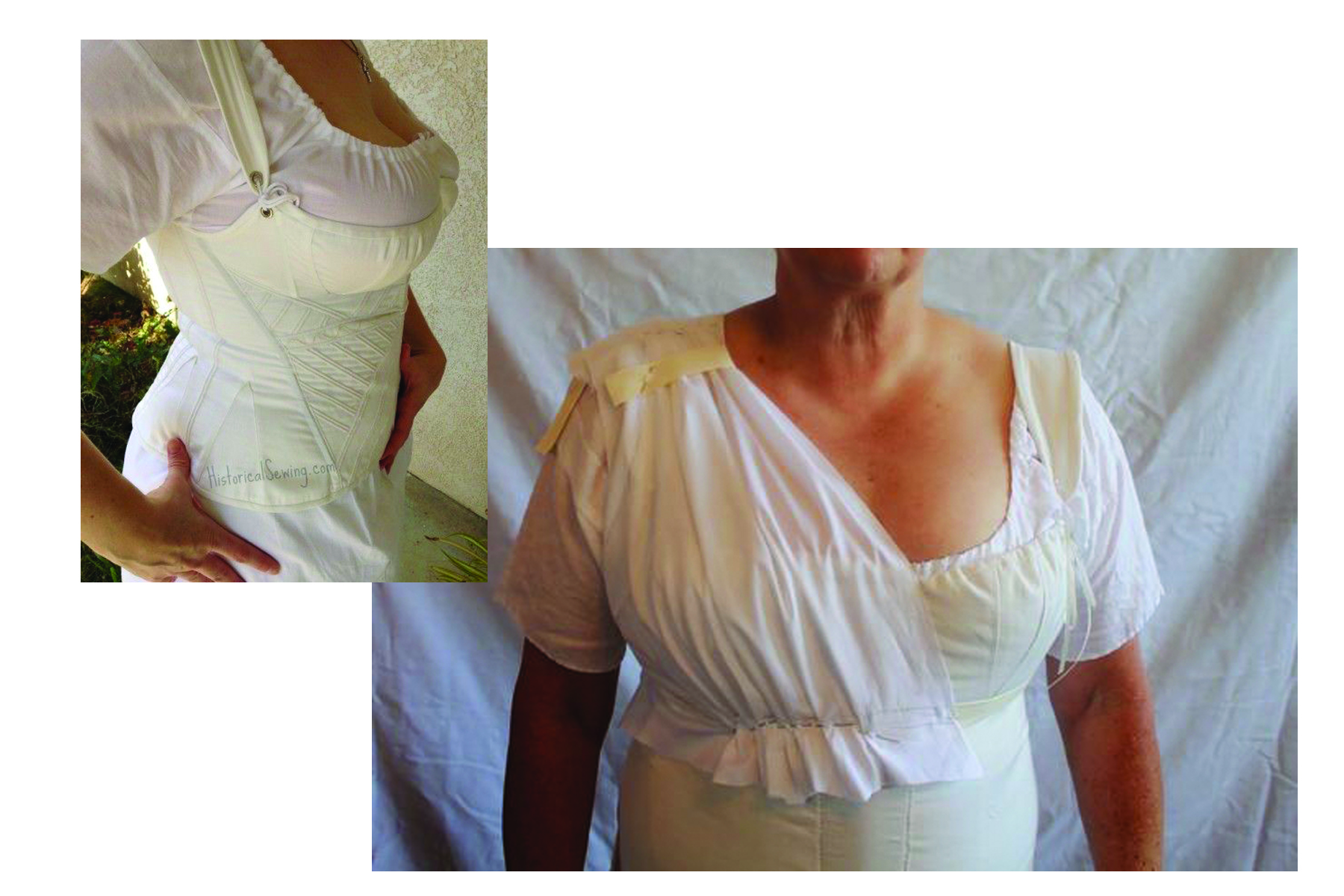
Holley’s stays are made of cotton brocade and lightly boned with a busk to lift and separate, but are otherwise only used to smoothe out lumps, and not to shape.
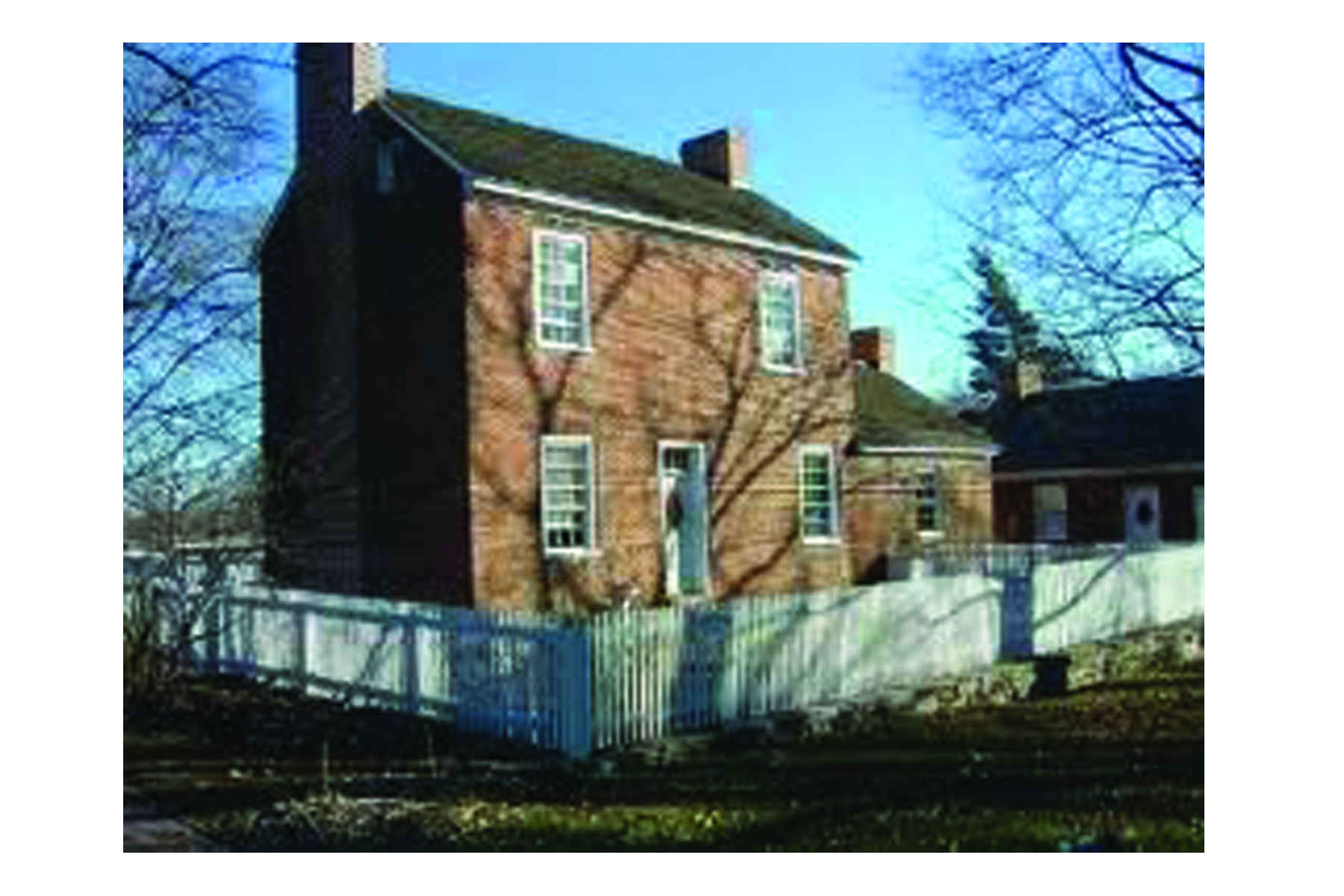
She has a puffed sleeved empire waisted under bodice, and beneath it all is a knee length sleeveless cotton chemise. Her overall look is typical of a Frenchwoman in St. Louis meeting Mrs. Boone and her friend Mrs. Sappington for lunch downtown.
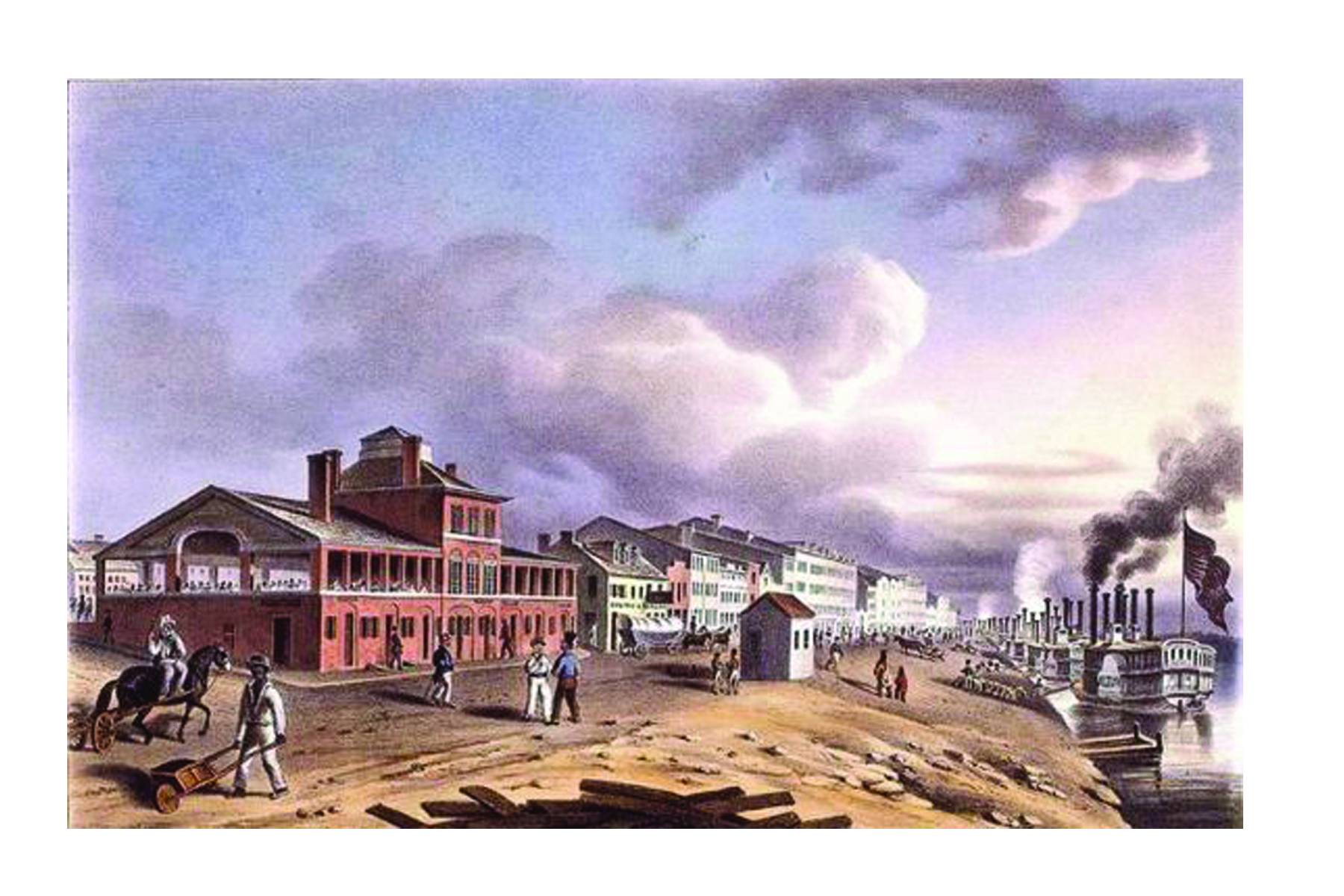
By 1810 the St Louis population would explode 228% with additional working class people coming directly from England, Ireland, and Germany, and next from the eastern states.
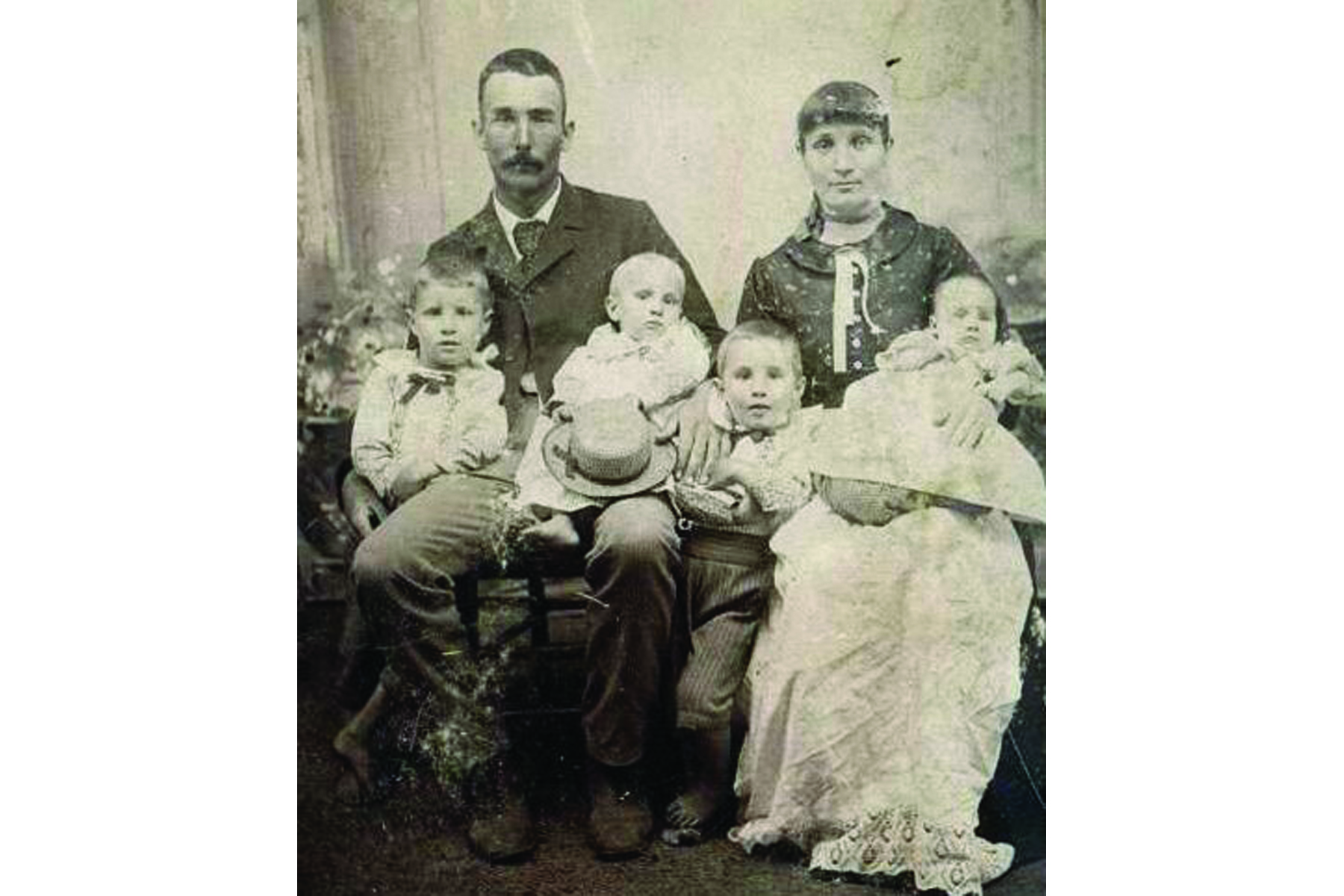
People like Daniel Boone’s son Nathan was there recruiting men for a regiment to fight the War of 1812 back east like Lewis & Clark’s mapmaker John Coulter
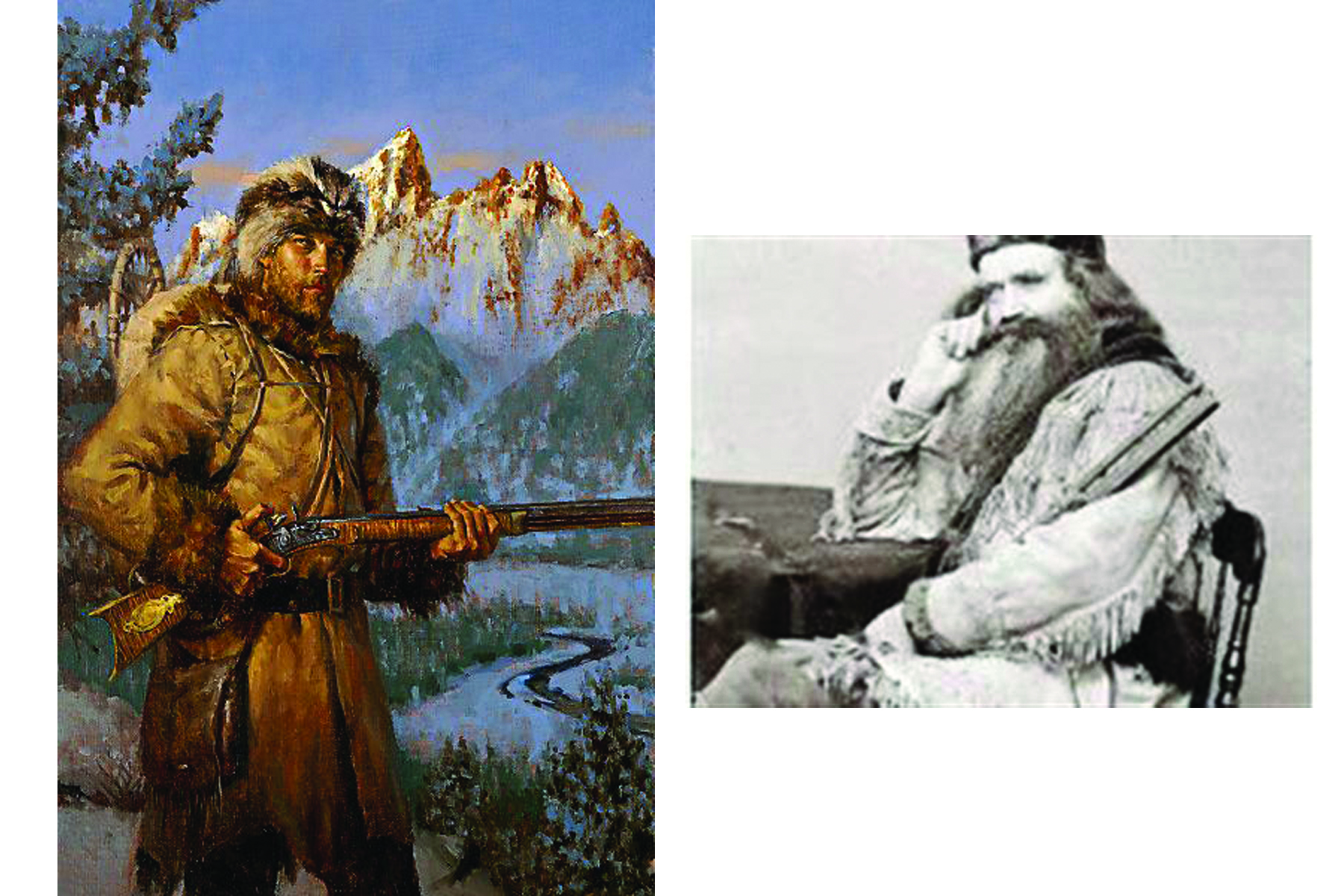
By 1850 though, 70% of St. Louis immigrants would come from Kentucky, Tennessee, or Virginia, to escape – or for some men – run towards the rumblings of War.
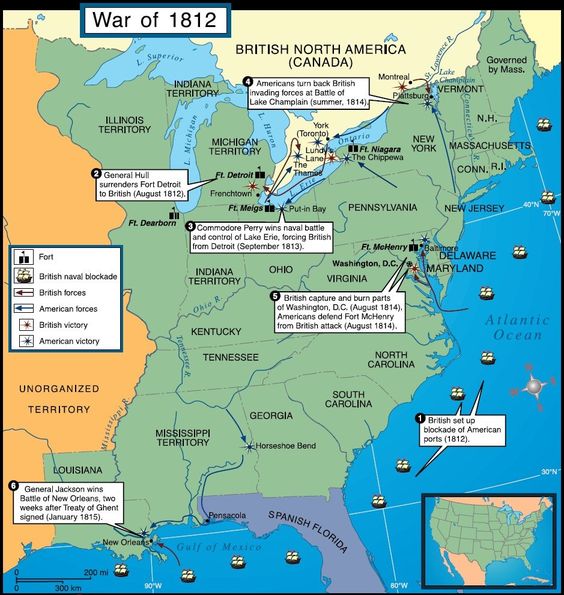
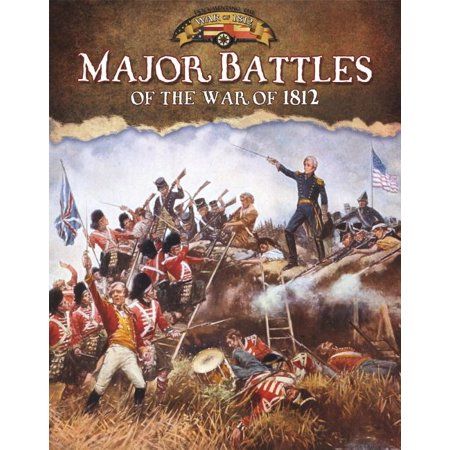
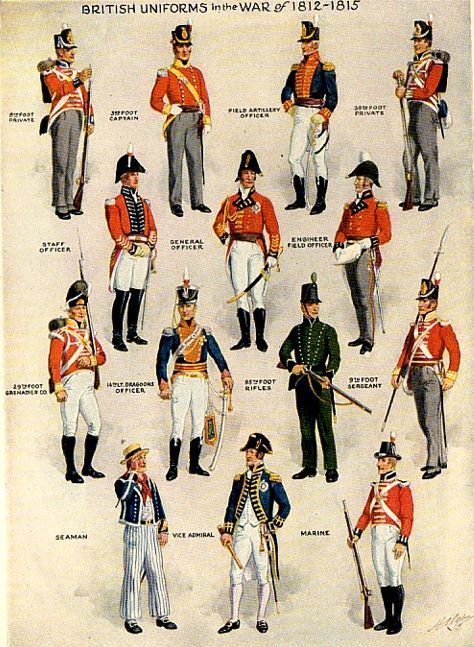
Click here to see more historical examples and some of the design development for this project

This ensemble includes (sorry no pictures):
- Black leather ballet slippers
- Silk over-the-knee stockings with tied garters
- (no panties!)
- 100% cotton chemise, “high calf” length with adjustable neckline; sleeveless
- short stays (early “corset”) with tabs and stomacher, lacing
- sheer silk corset cover/camisole top over corset (sleeves you see)
- upper petticoat, under bust fit with shoulder straps and tucks
- robe (dress) silk dupioni embroidered in gold metal thread; underbust fit with tie adjustment and back lacing
- red linen spencer (jacket) with gold metal clasp
- Regency gold silk bonnet of heavy buckram (handmade) and linen faced with cottonballs and silk ribbon
- Natural (real) pink pearl necklace with matching bracelet and reproduction pearl clip on earrings
- optional real pink pearl headband and flowers under hat
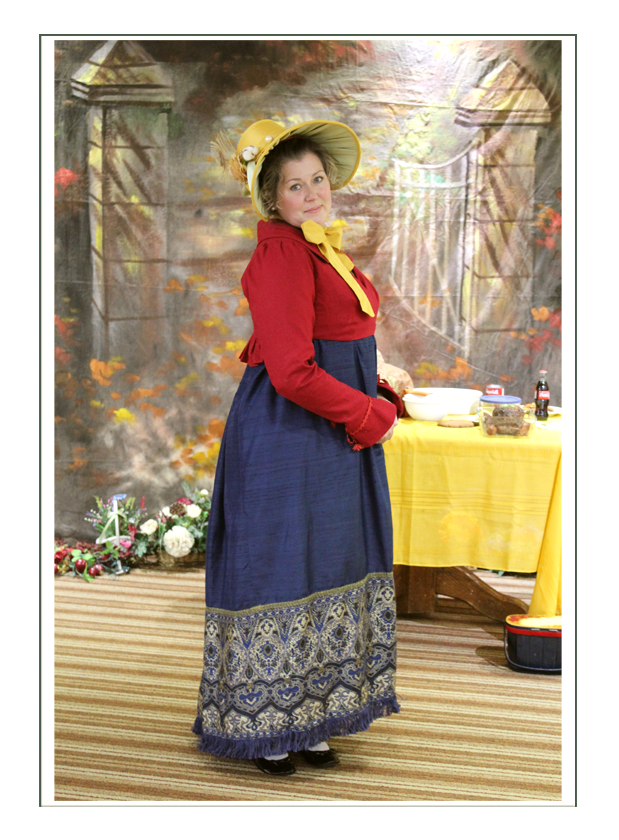
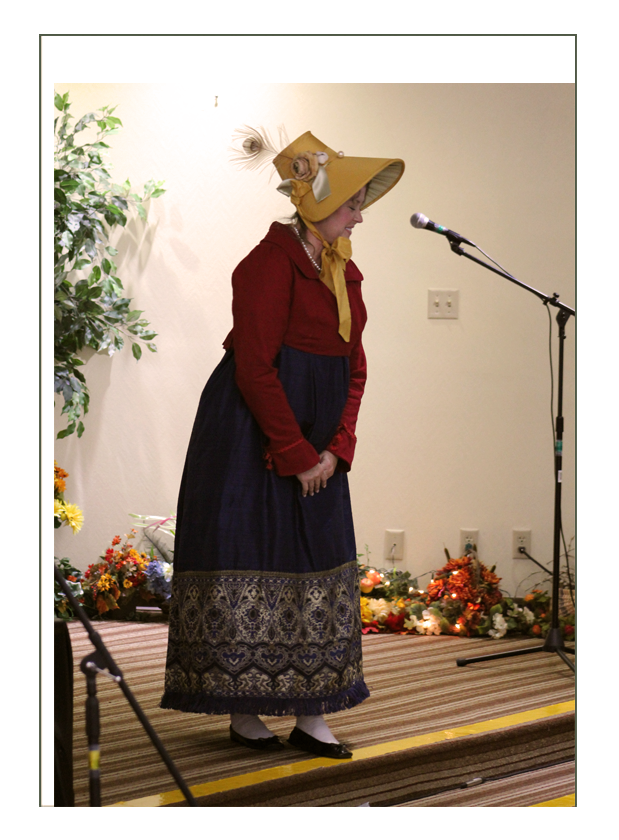
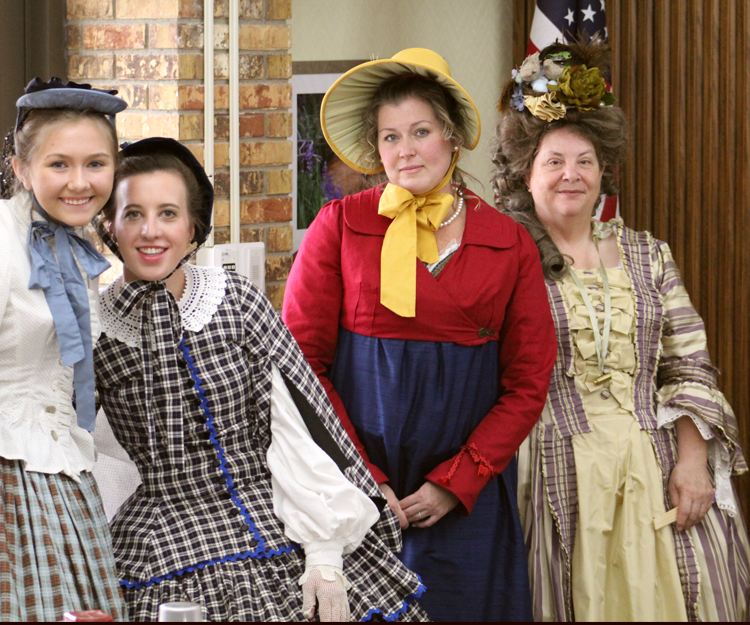
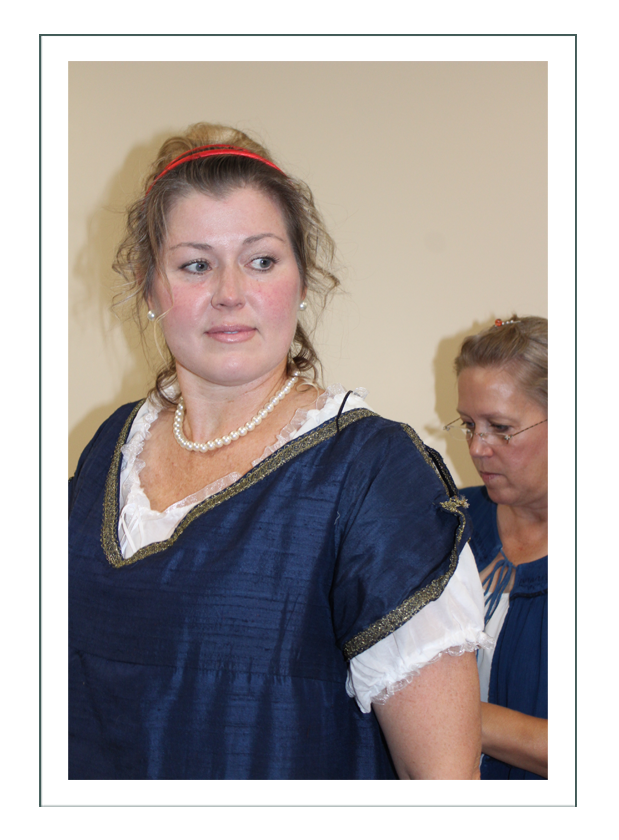

Click here to see more historical examples and some of he design development for this project
